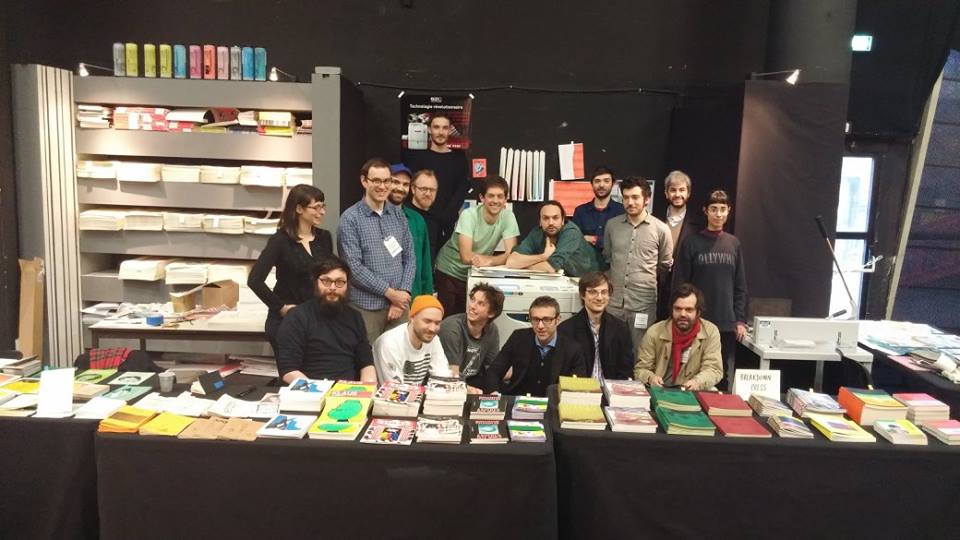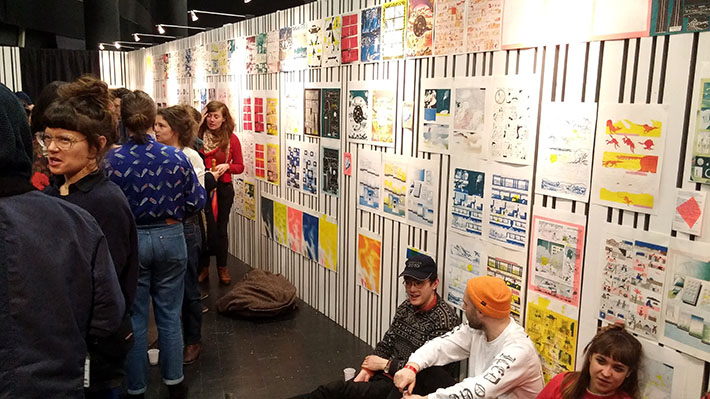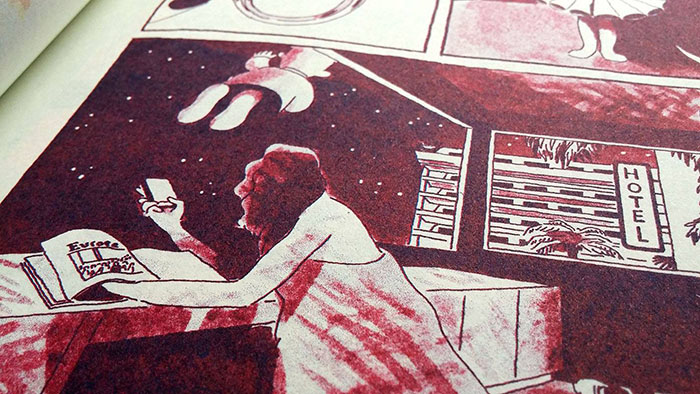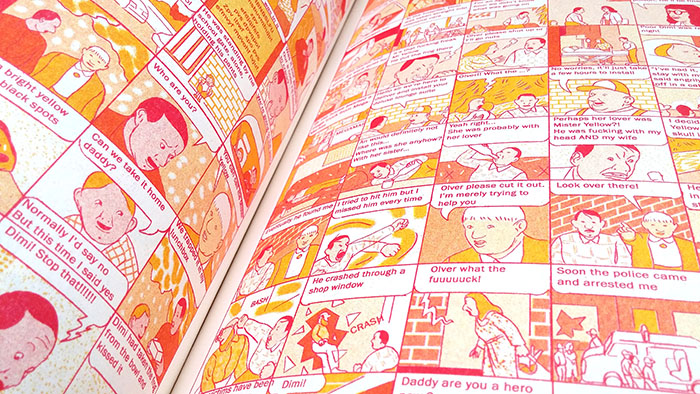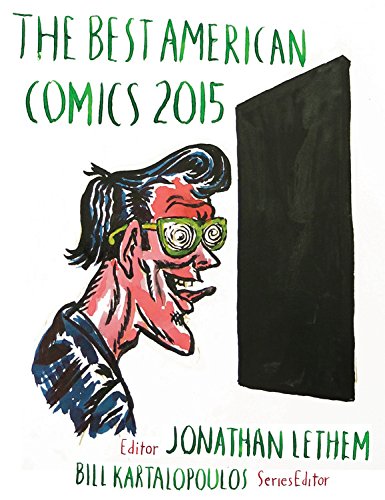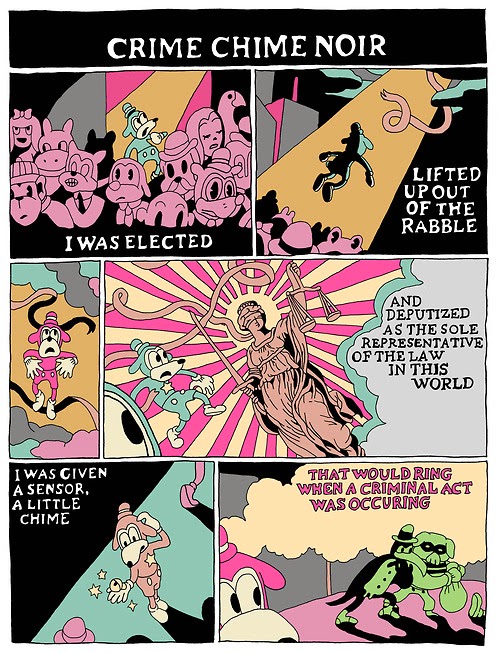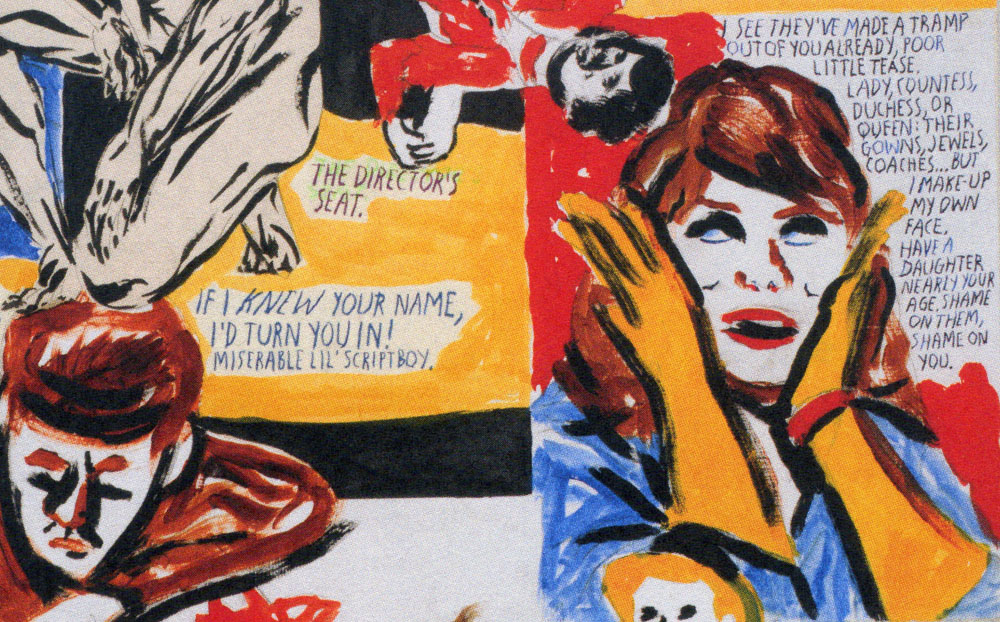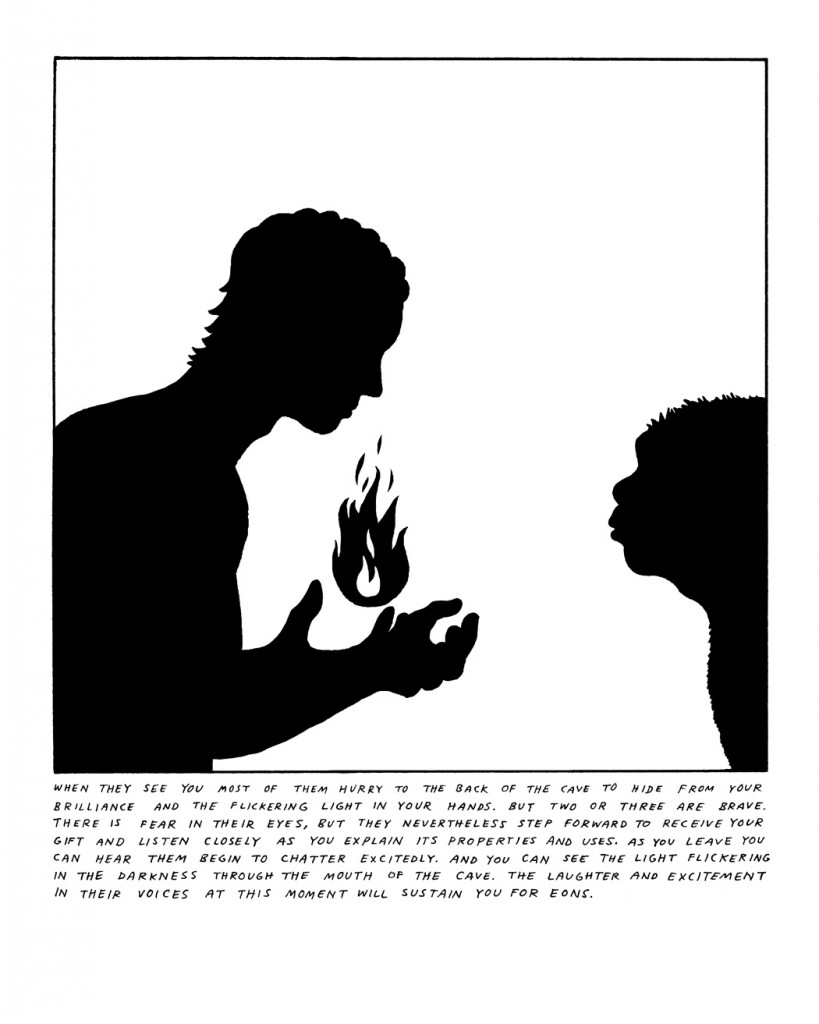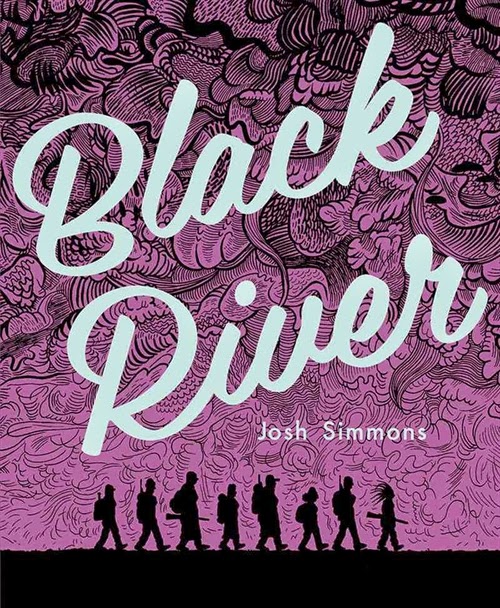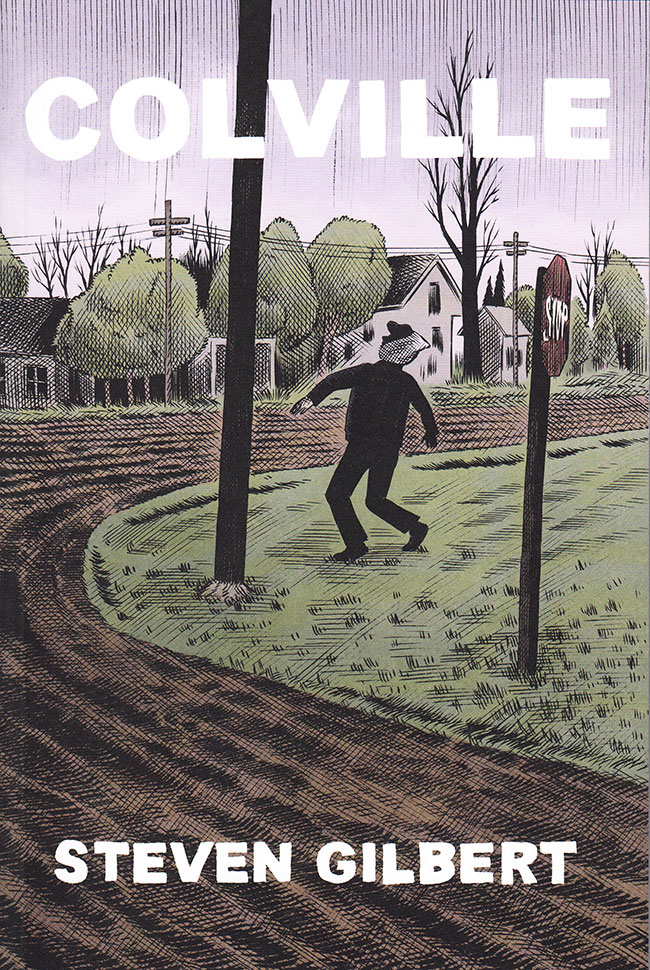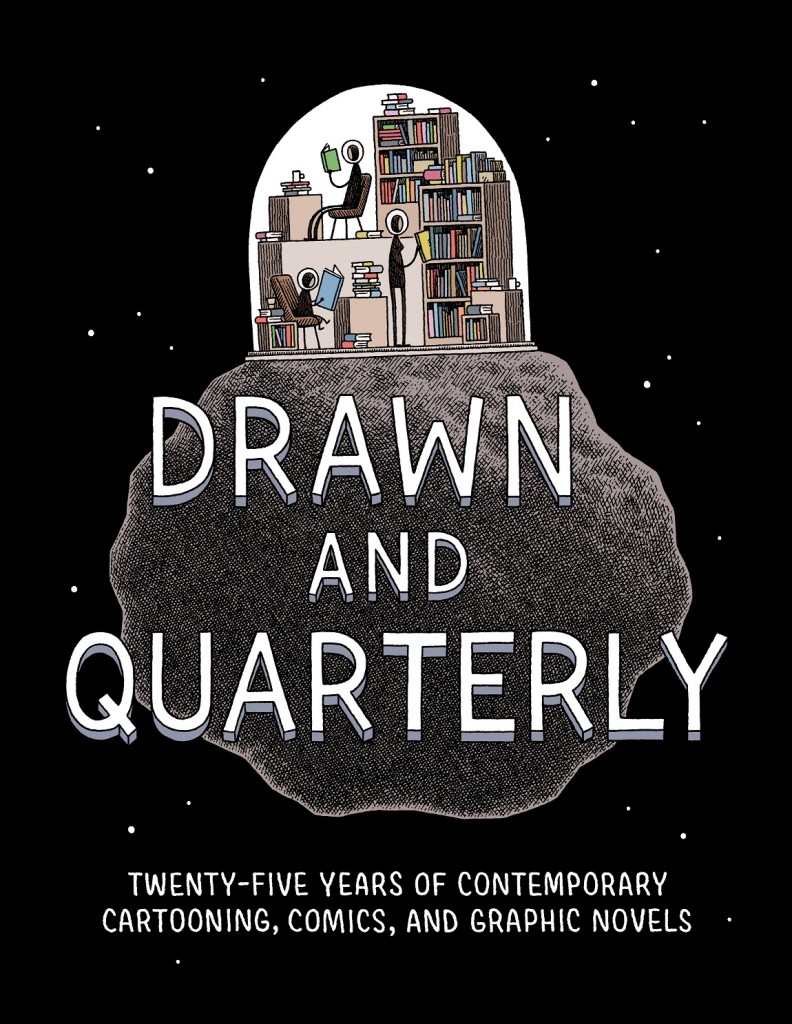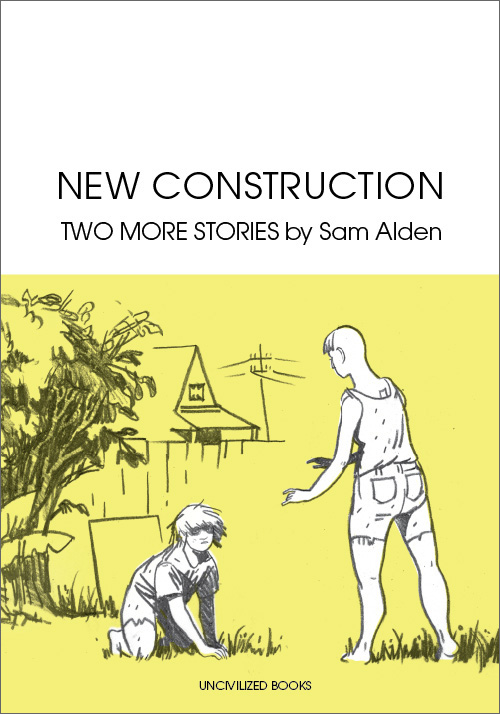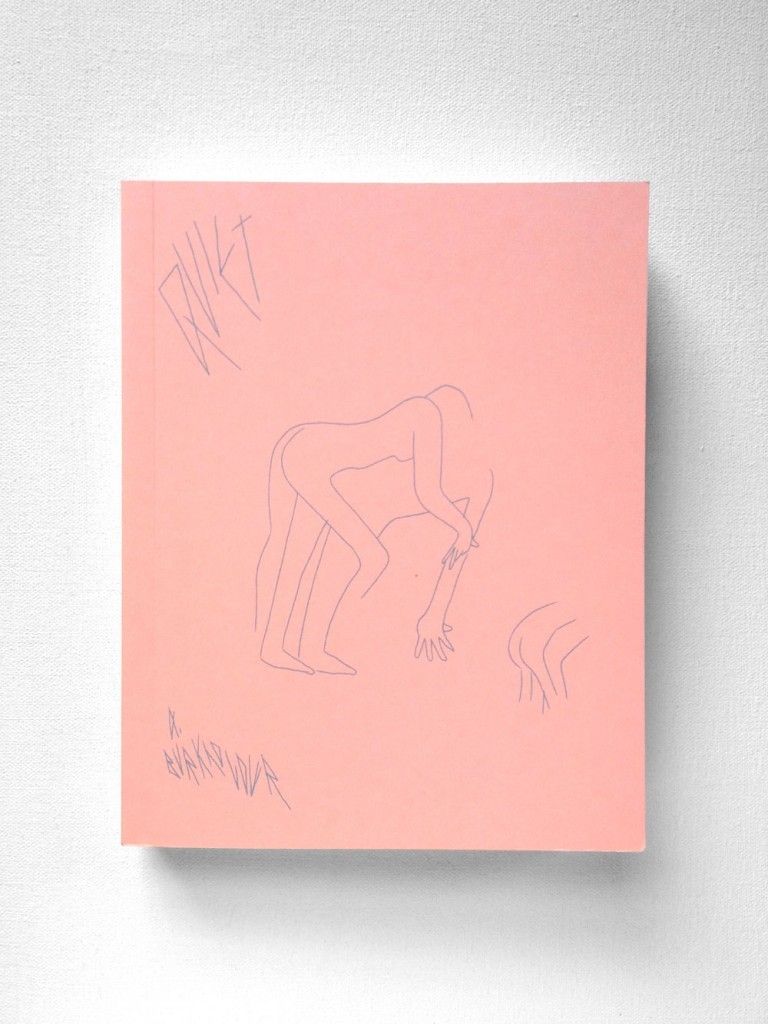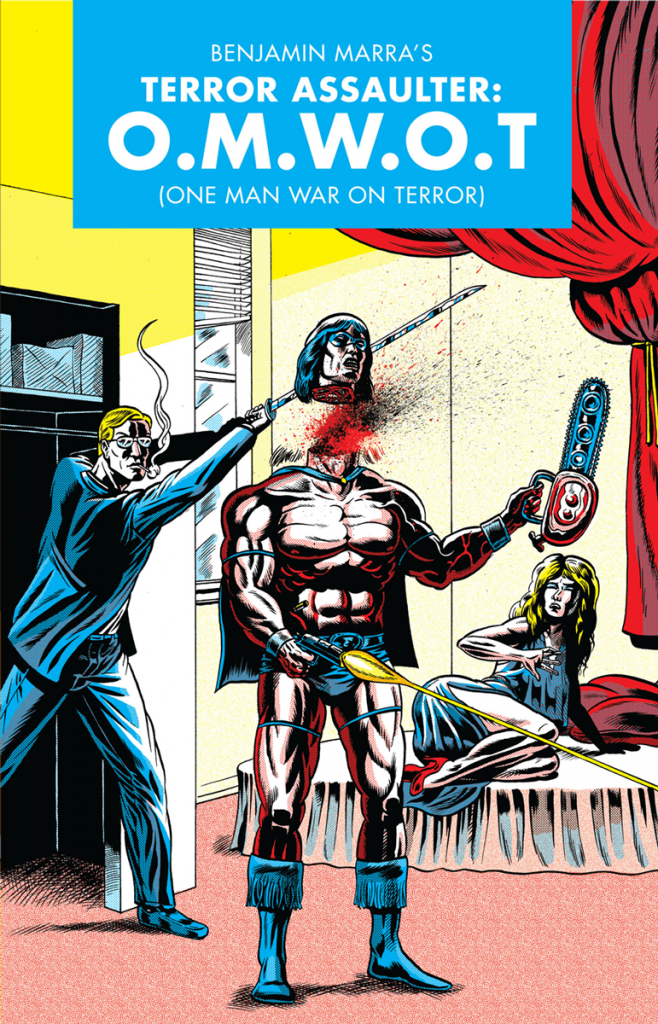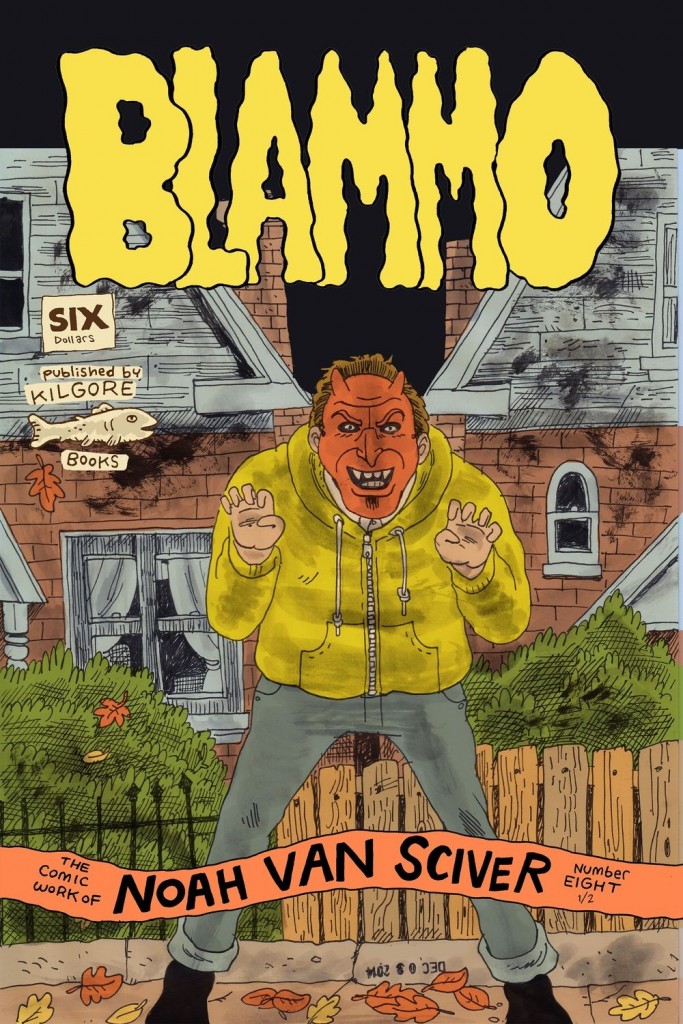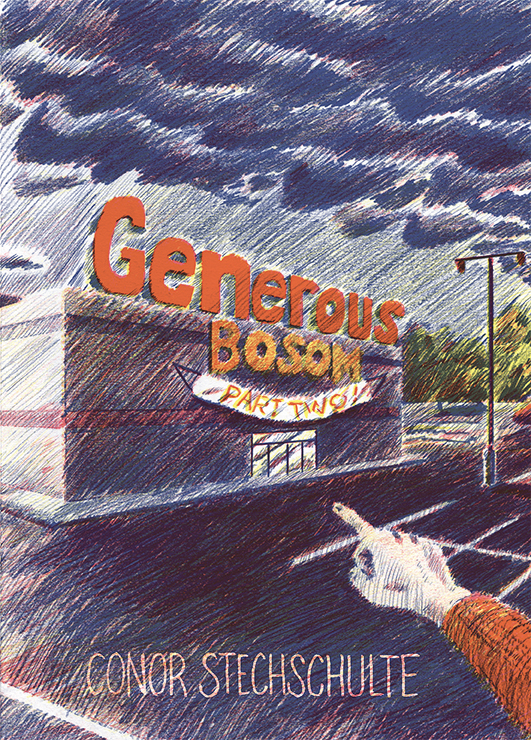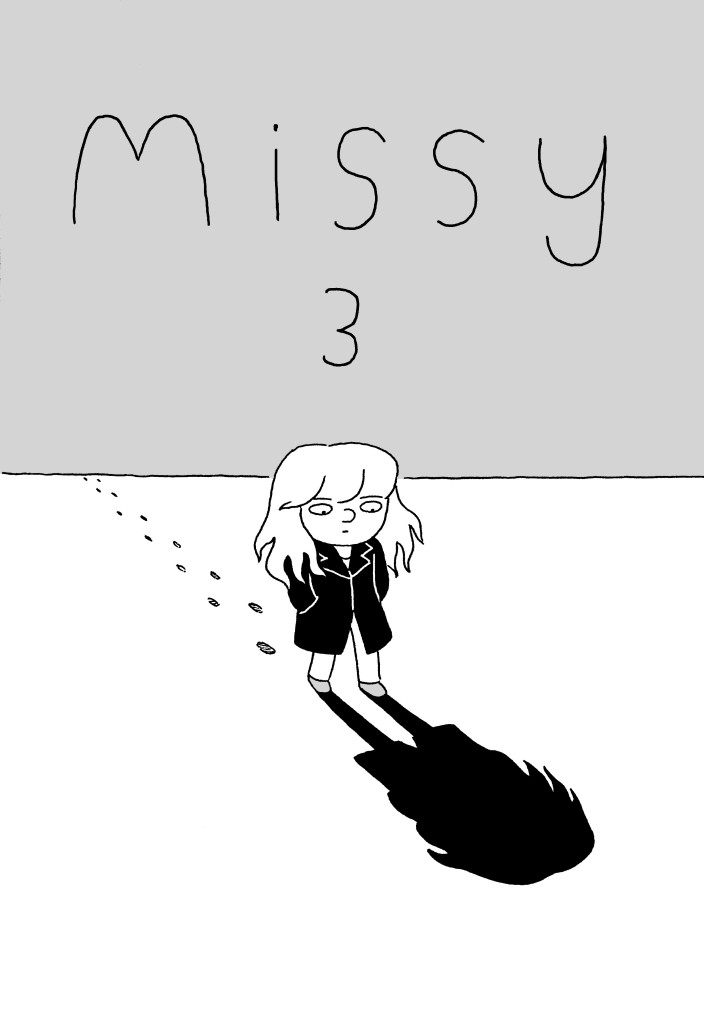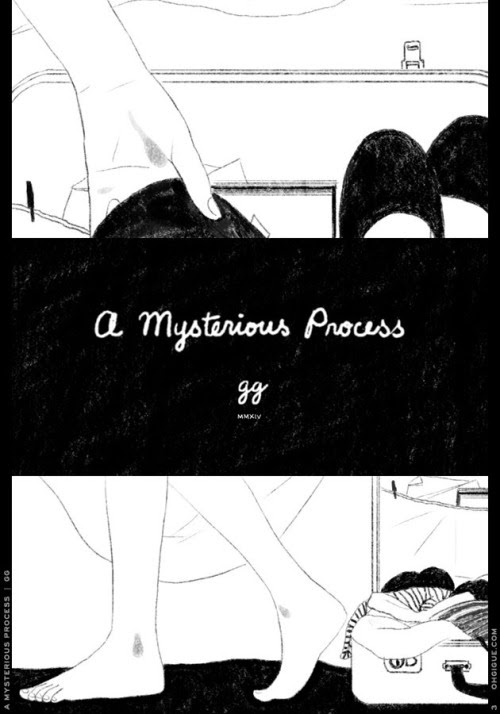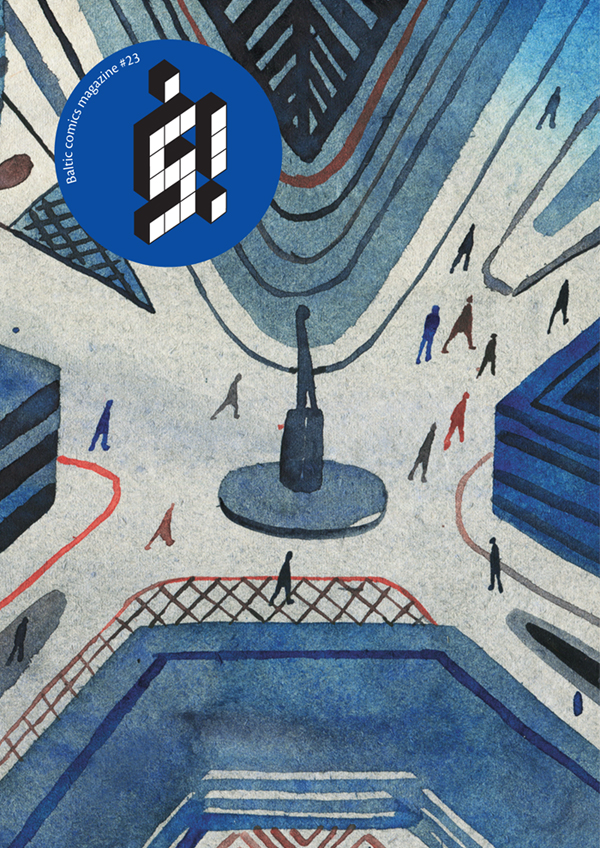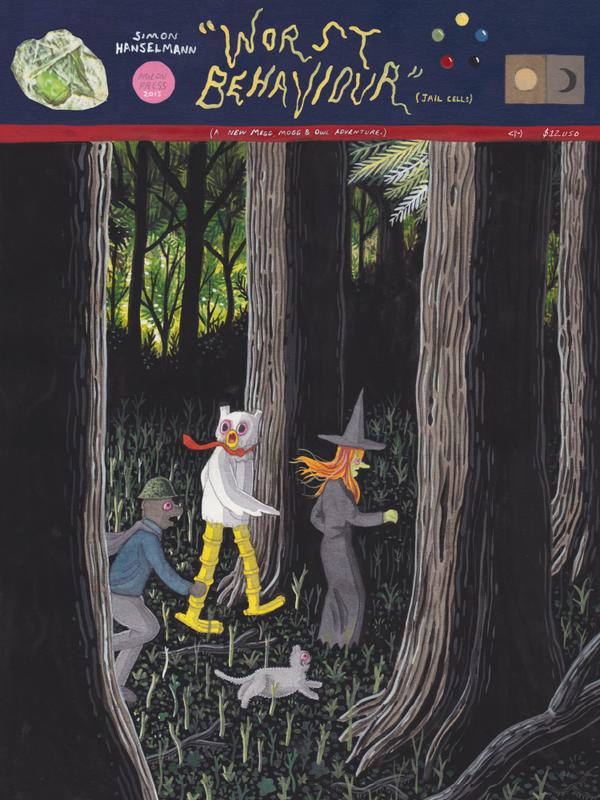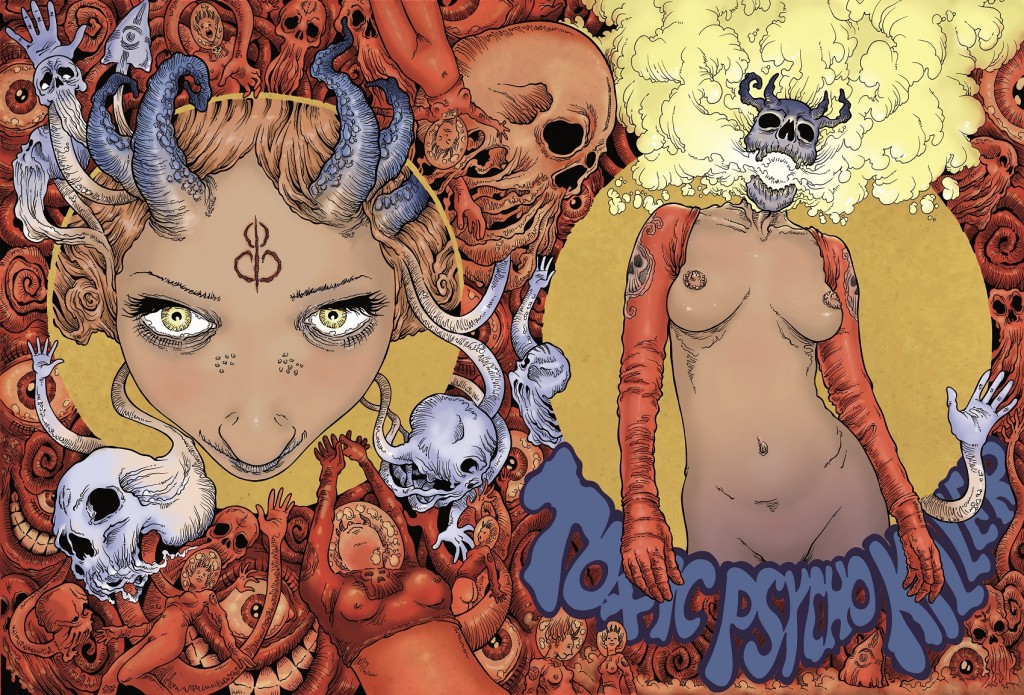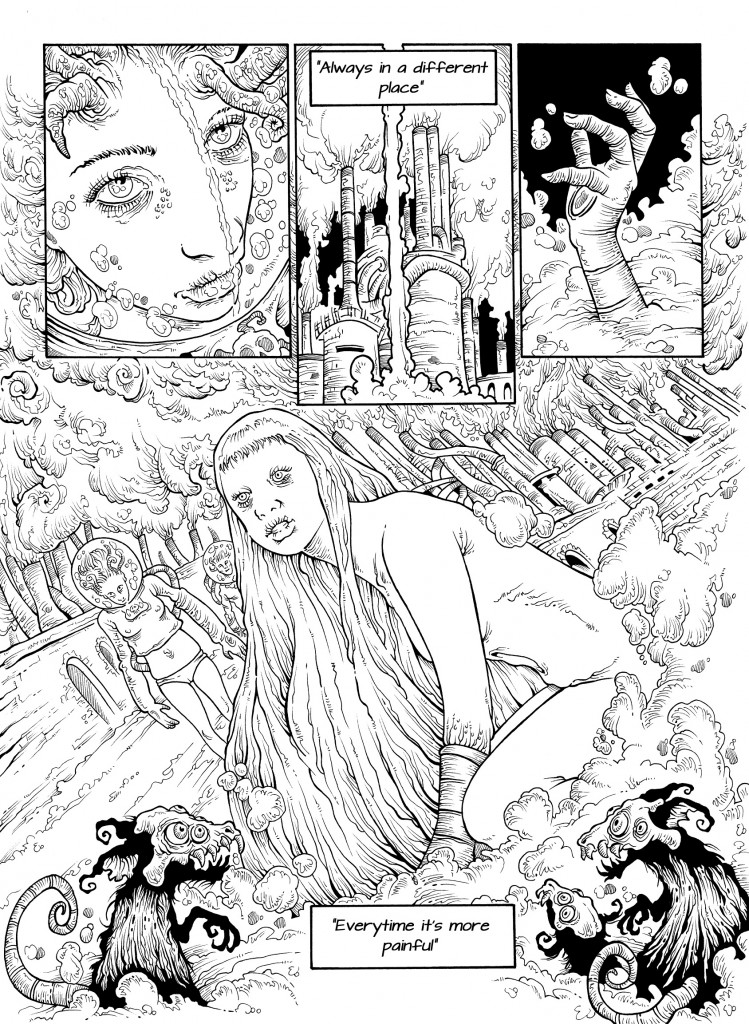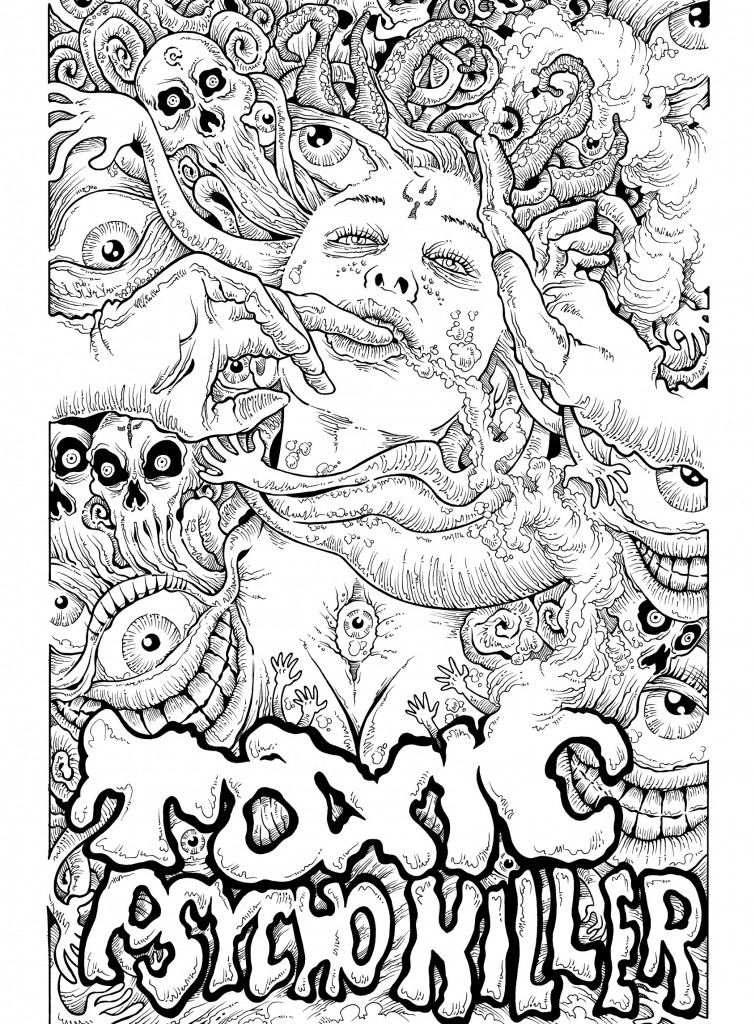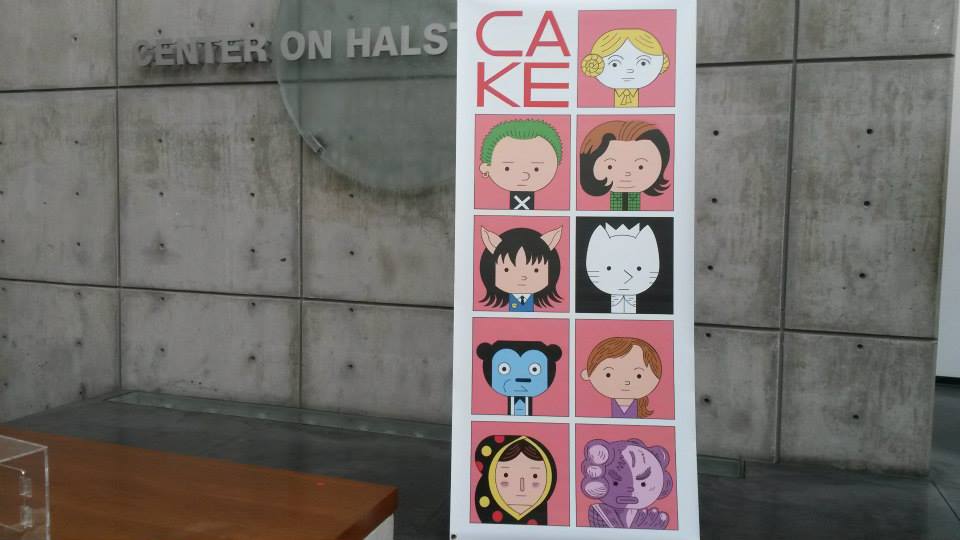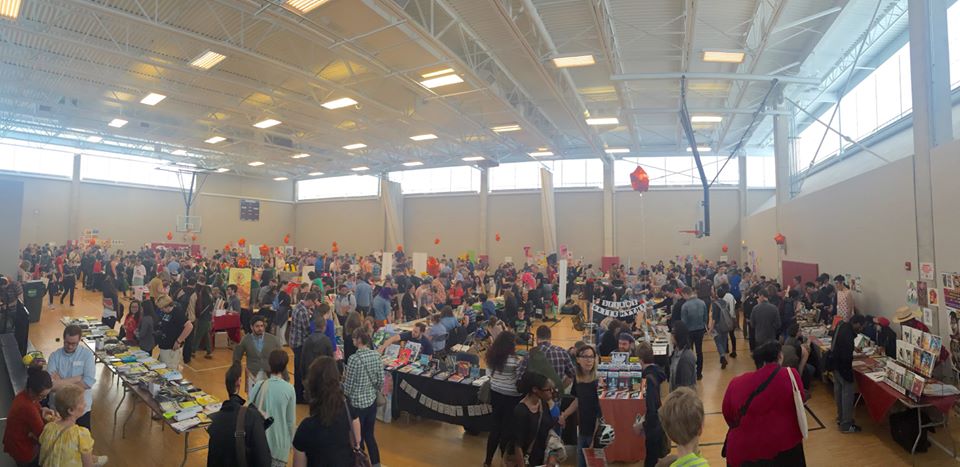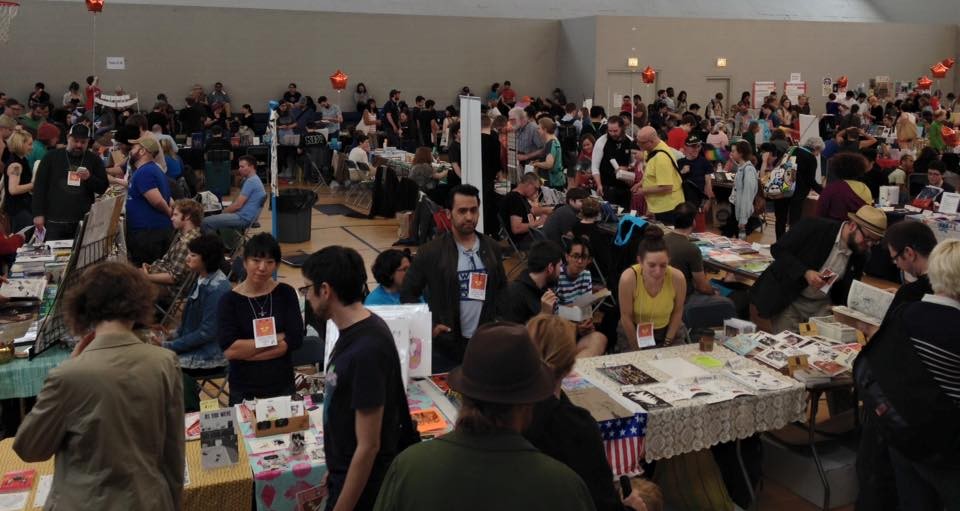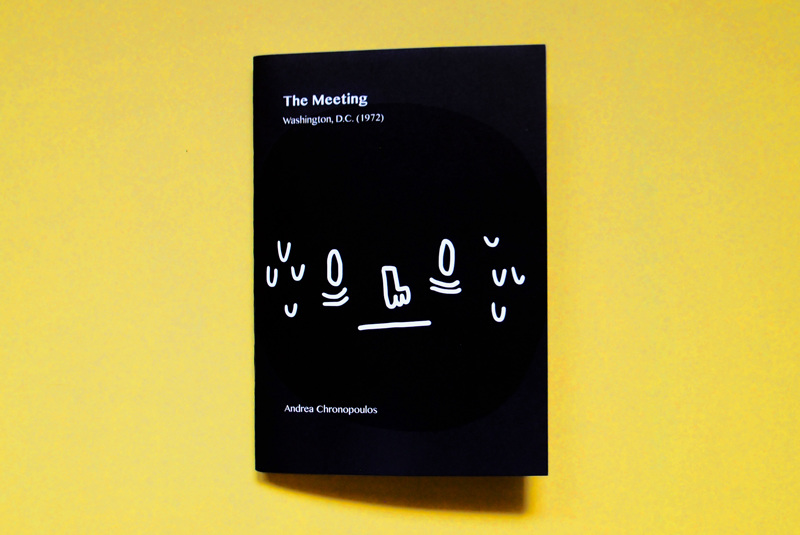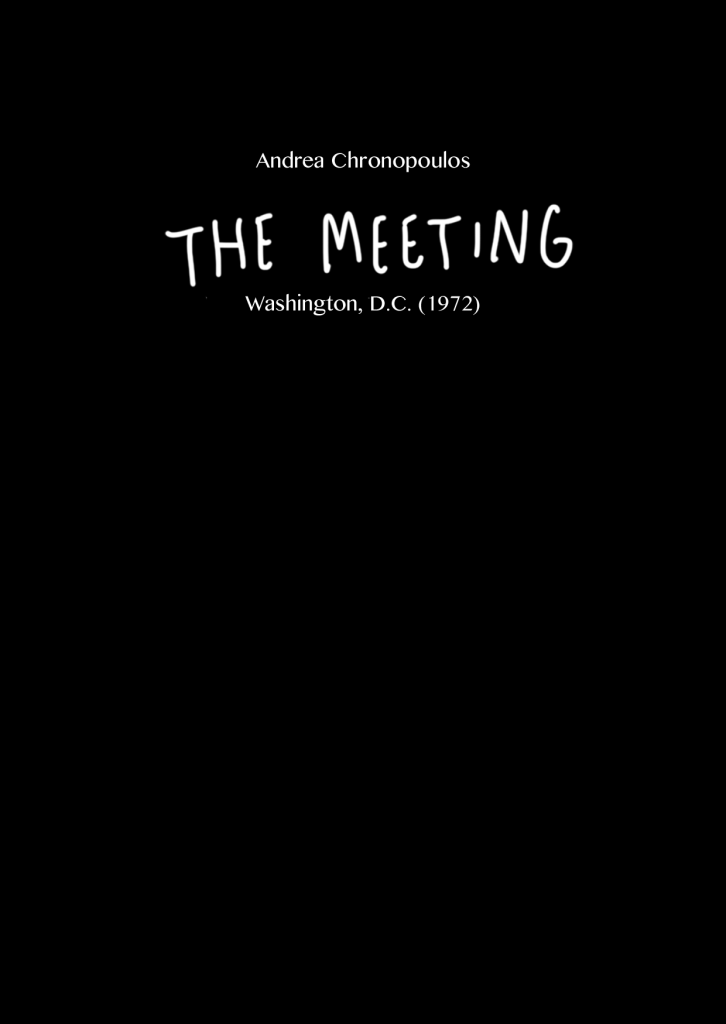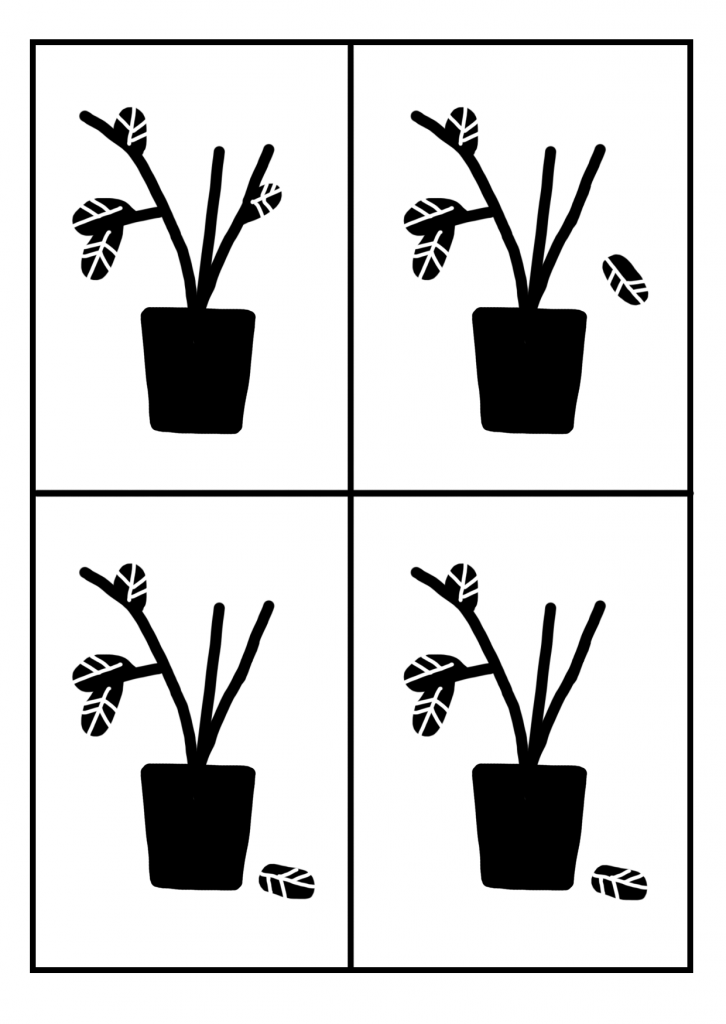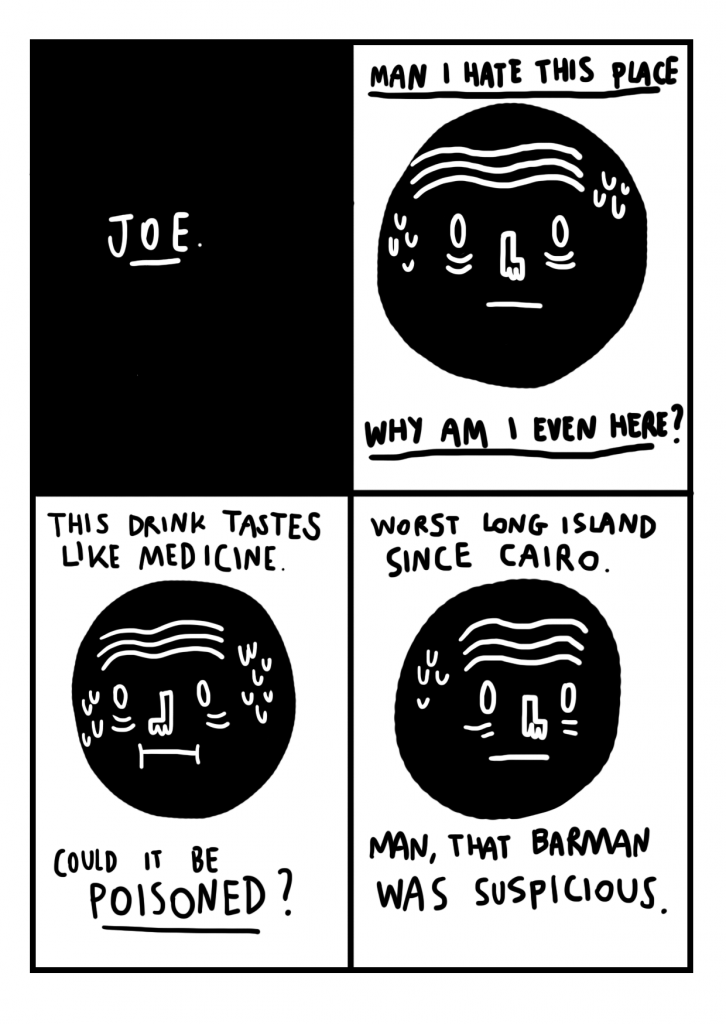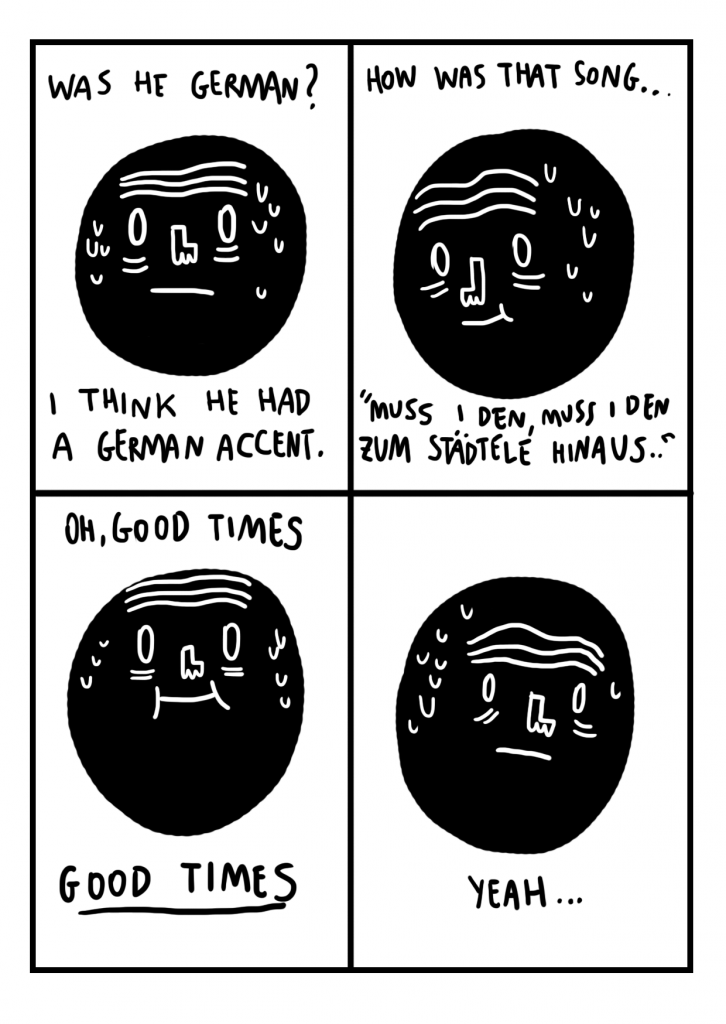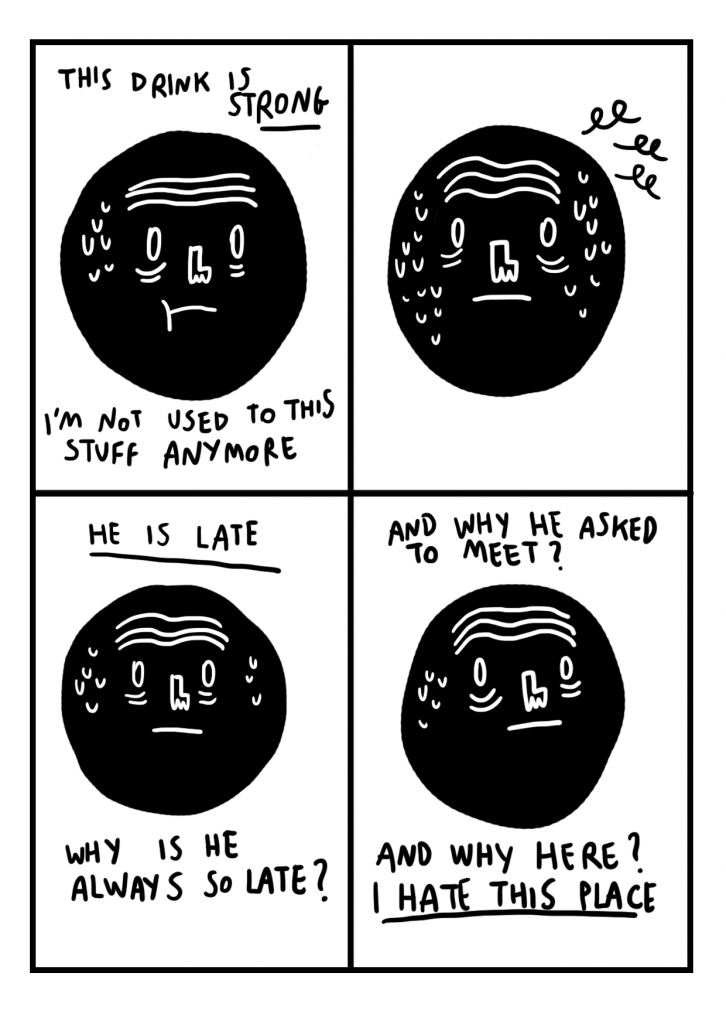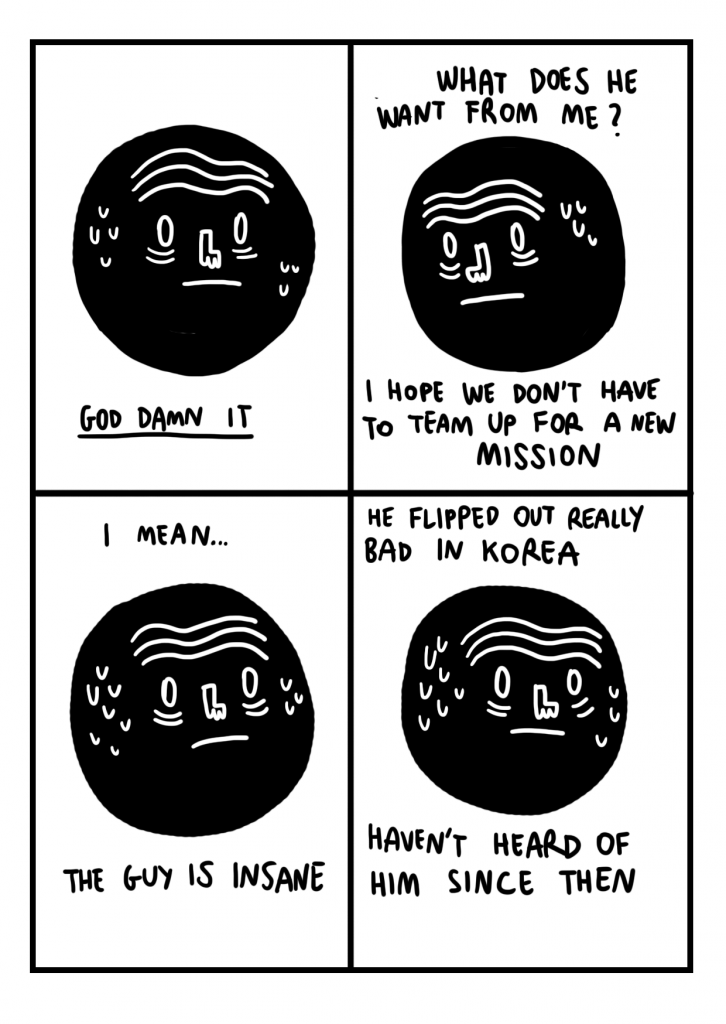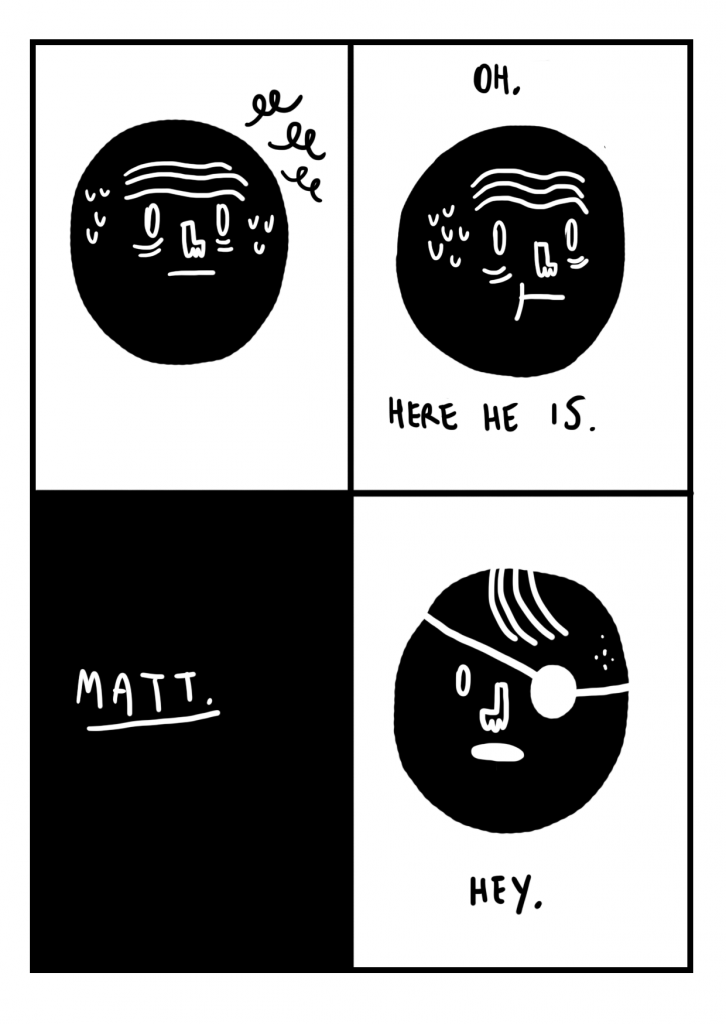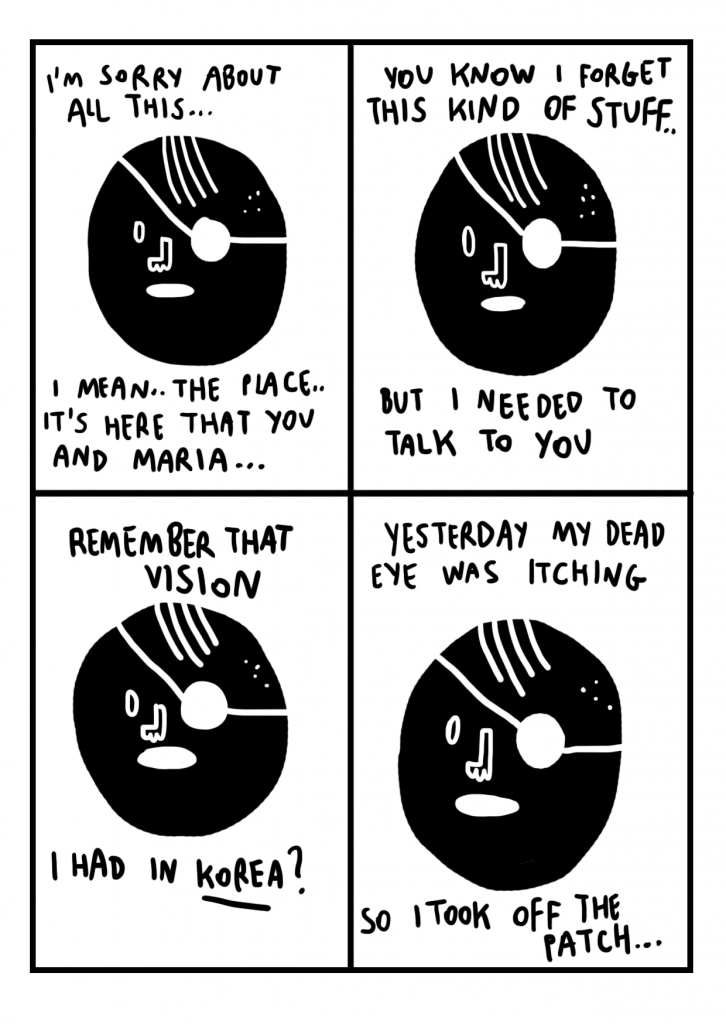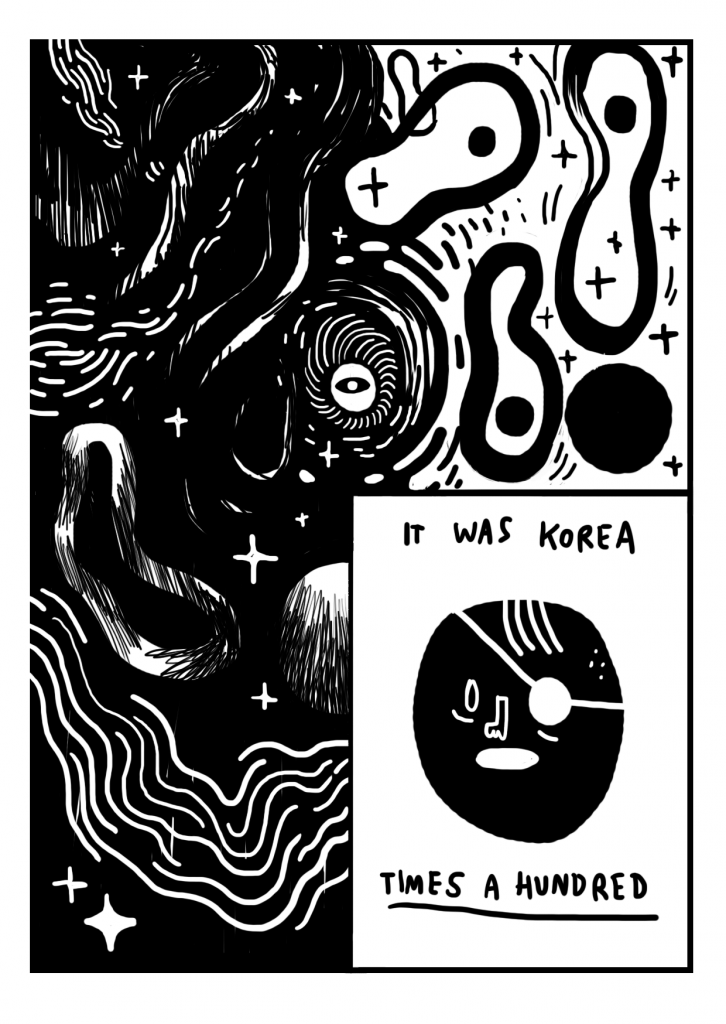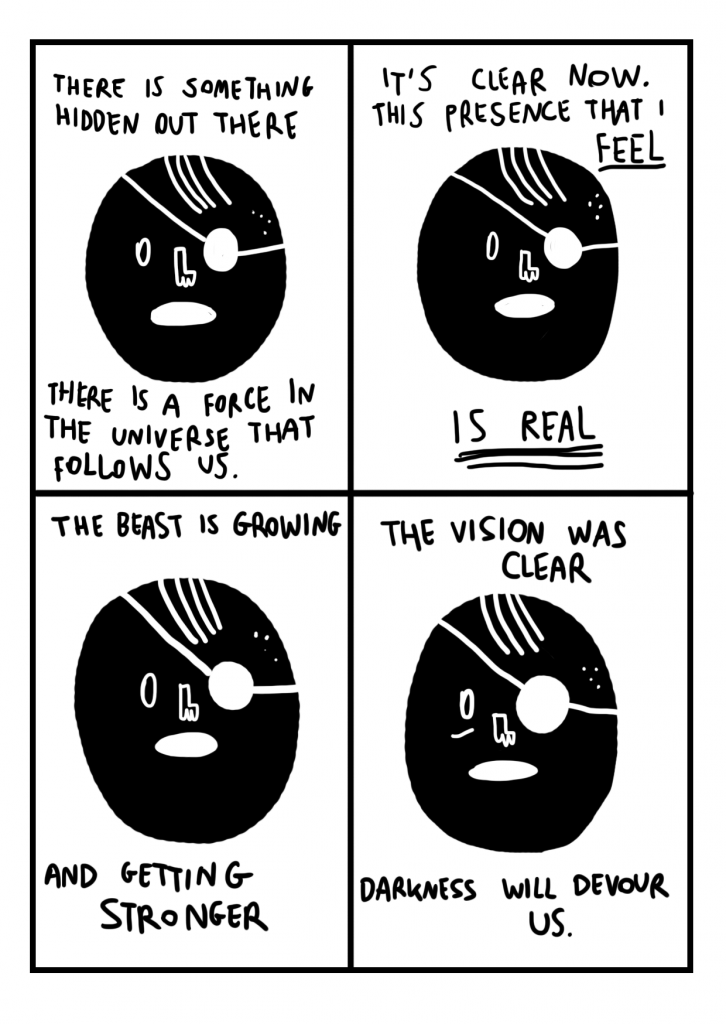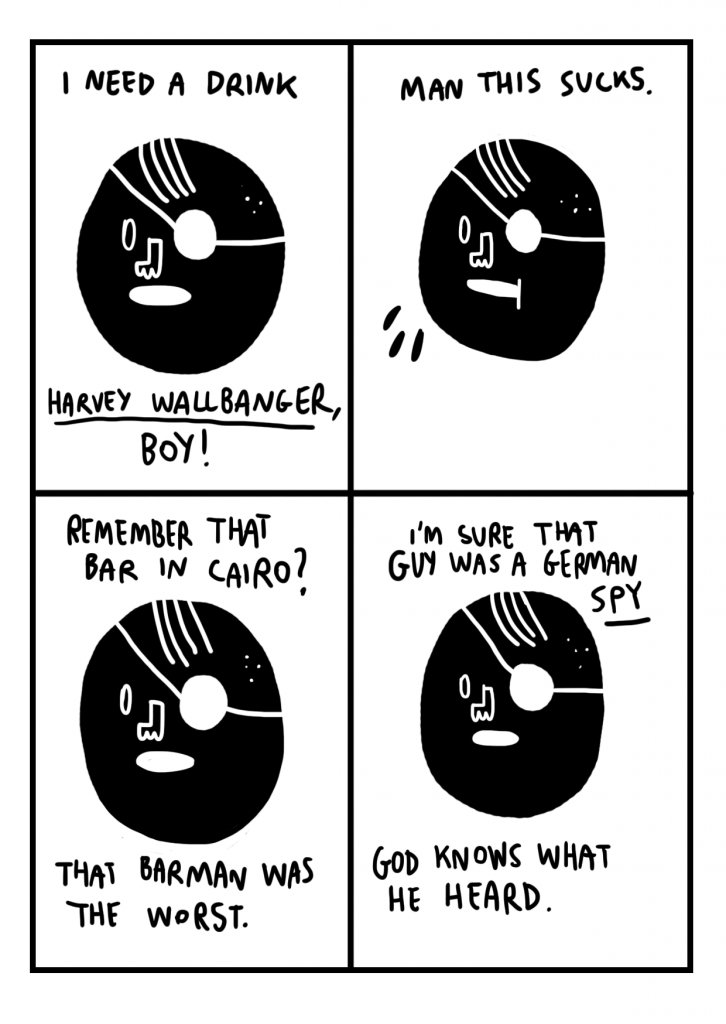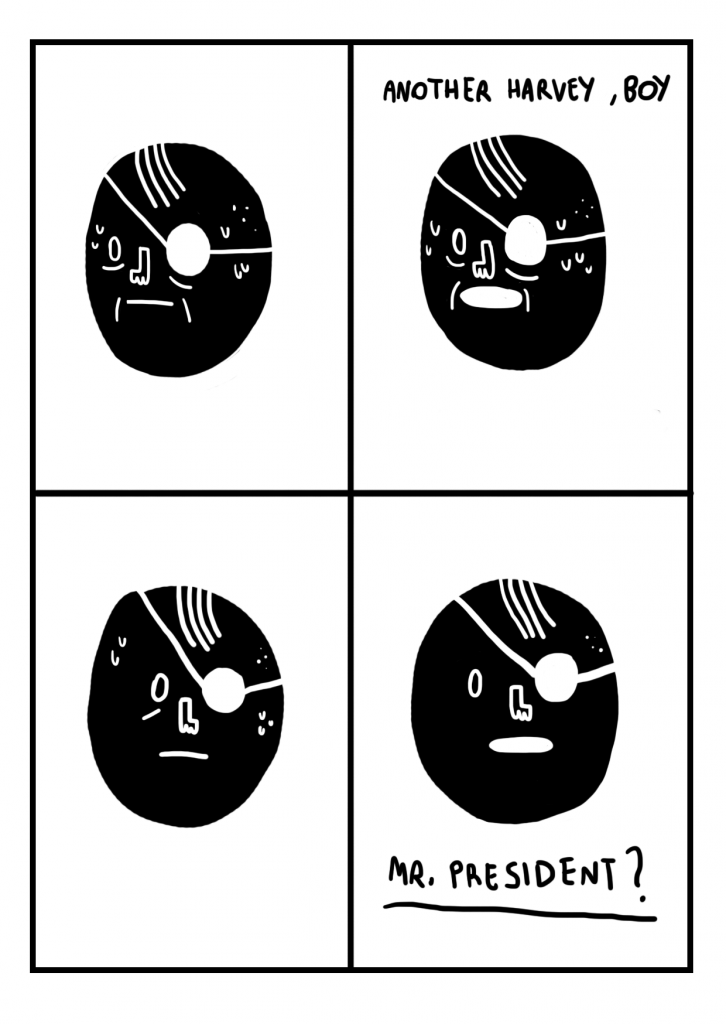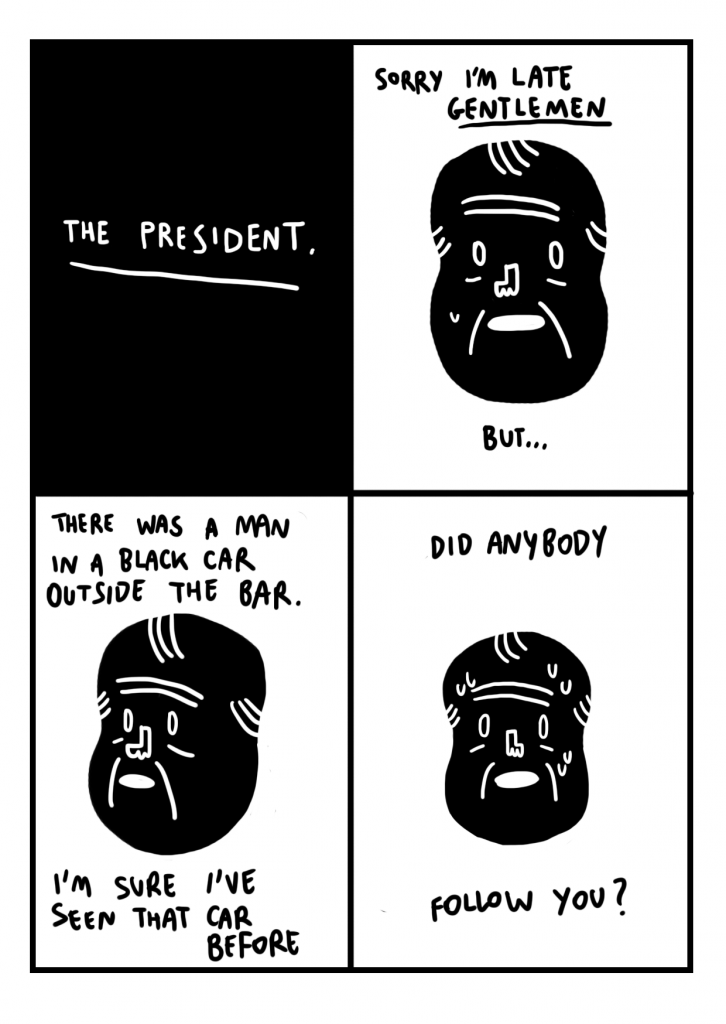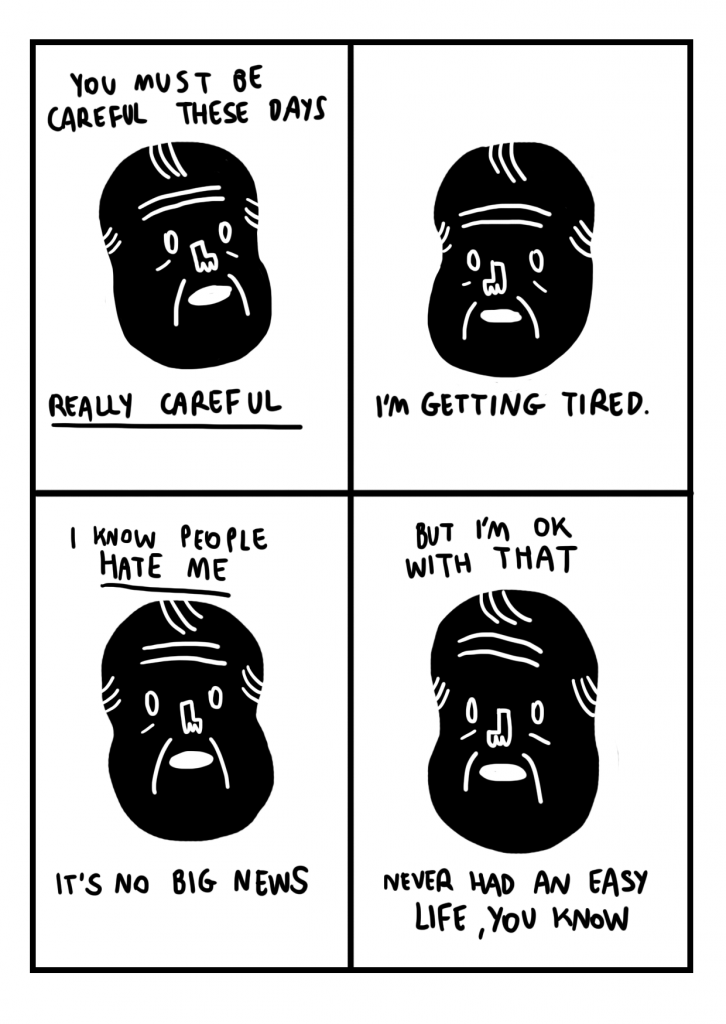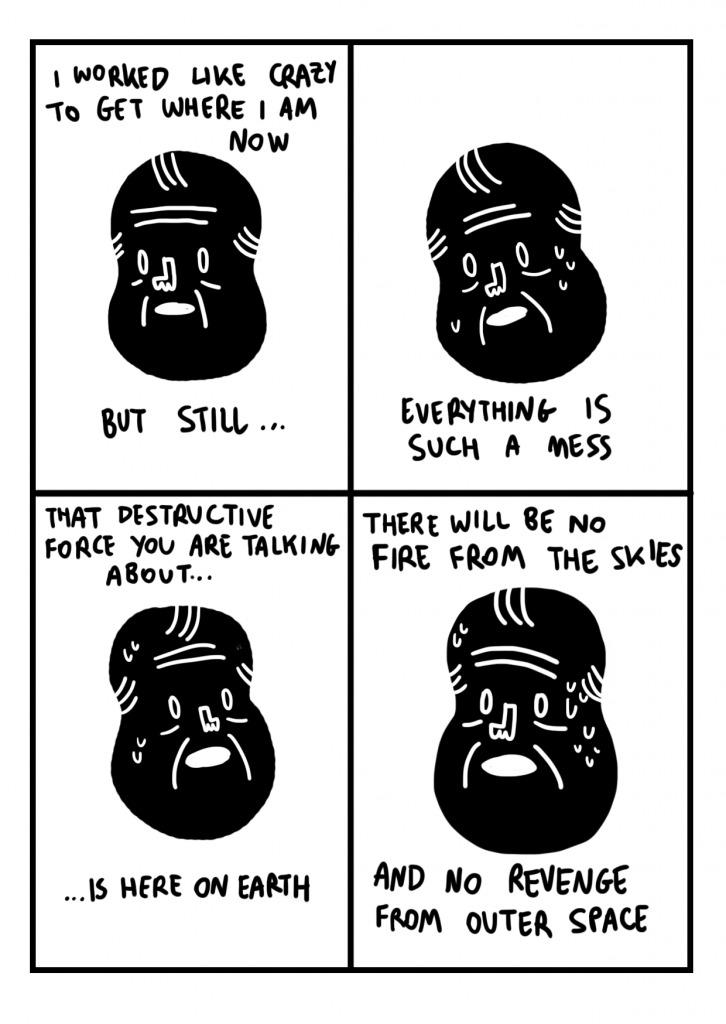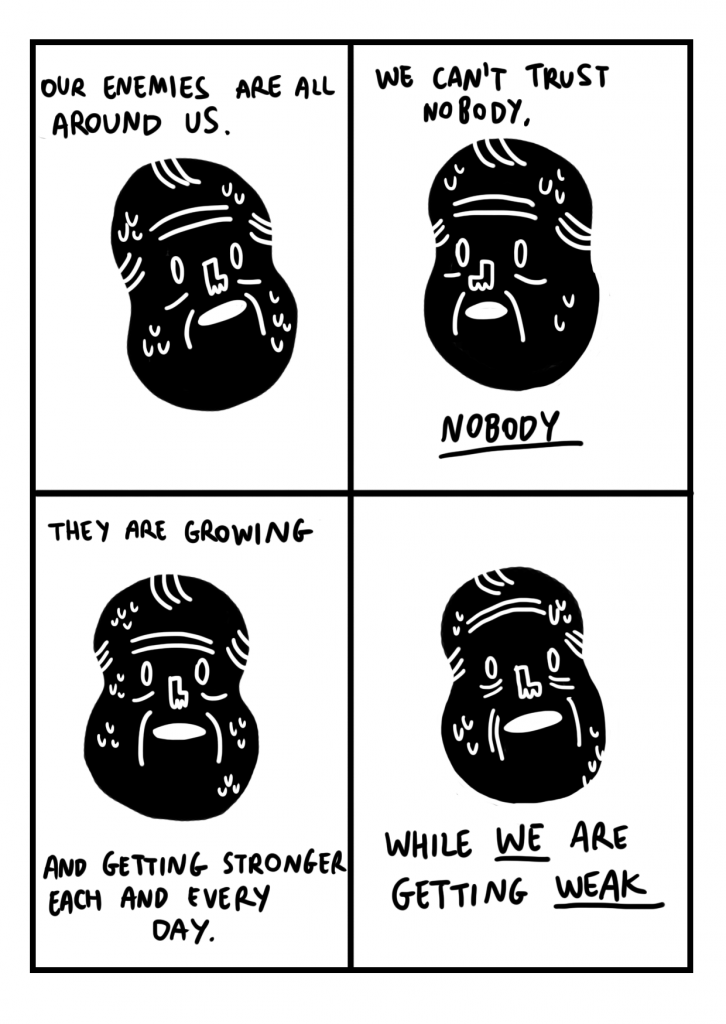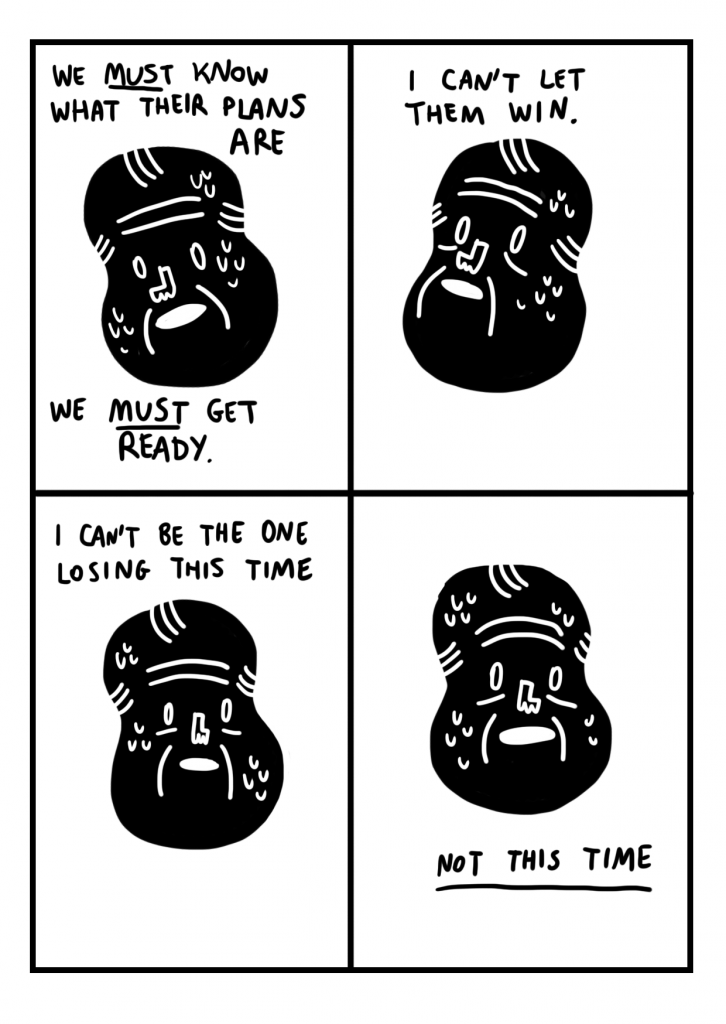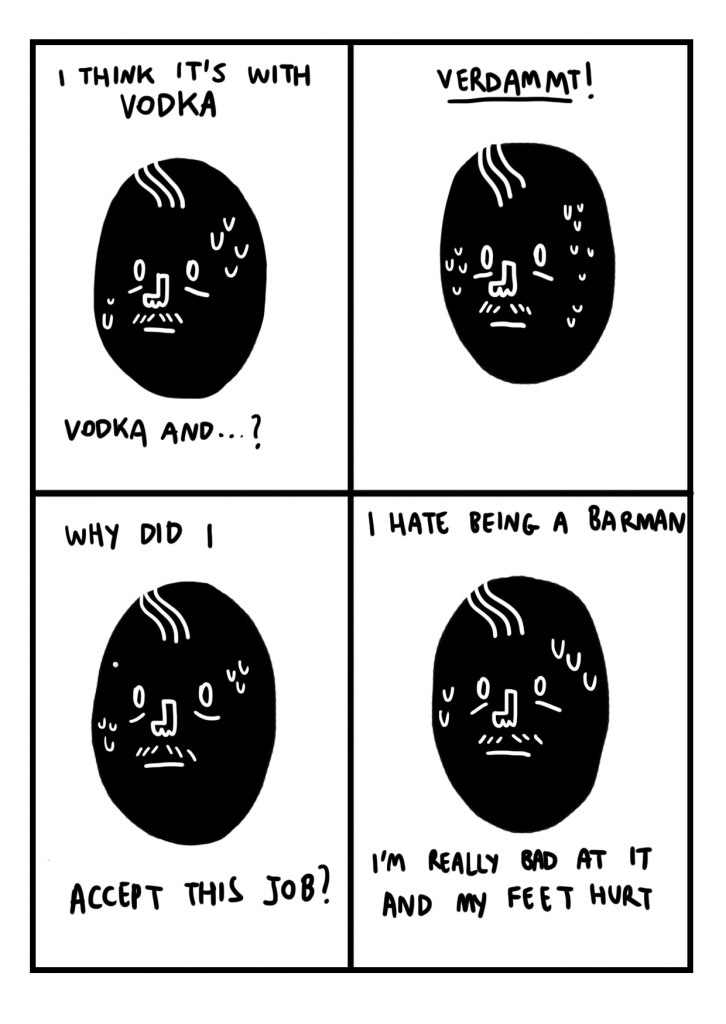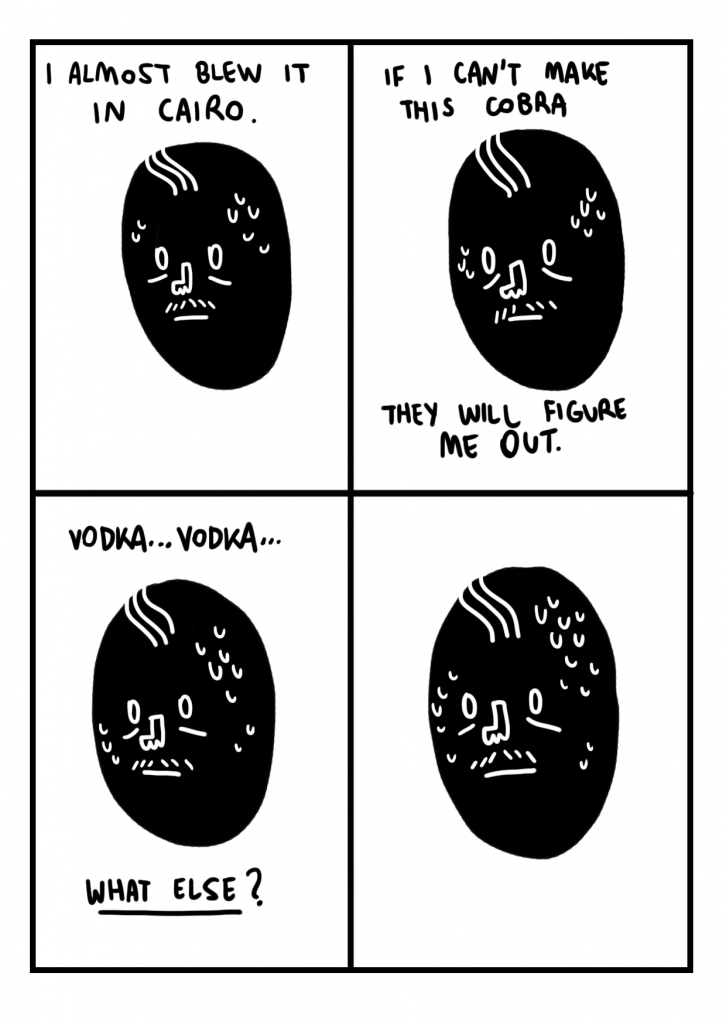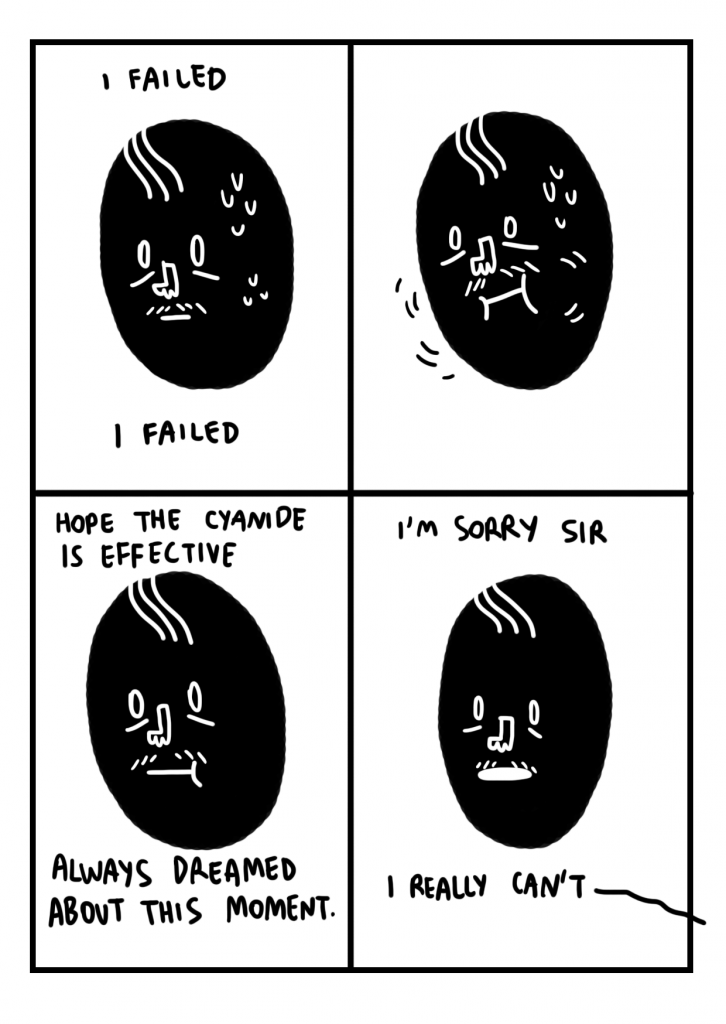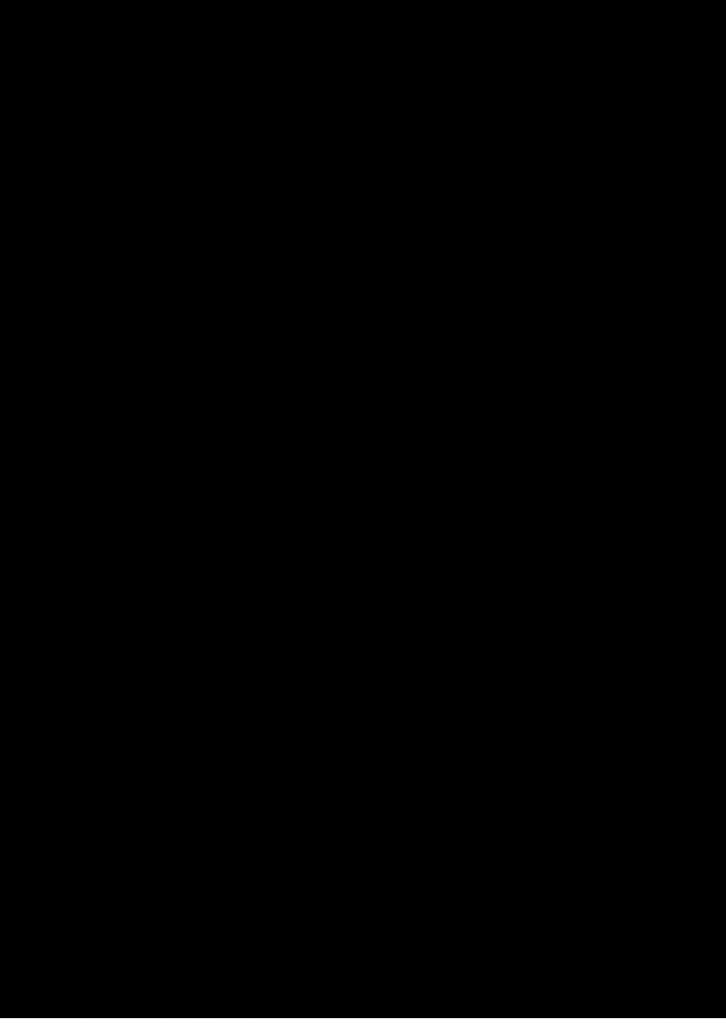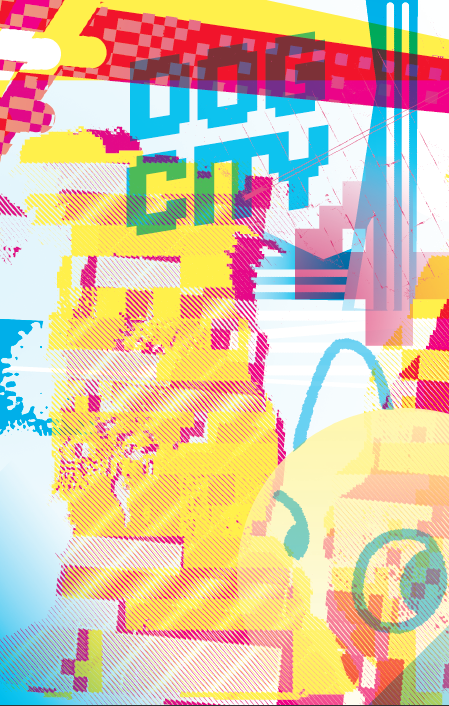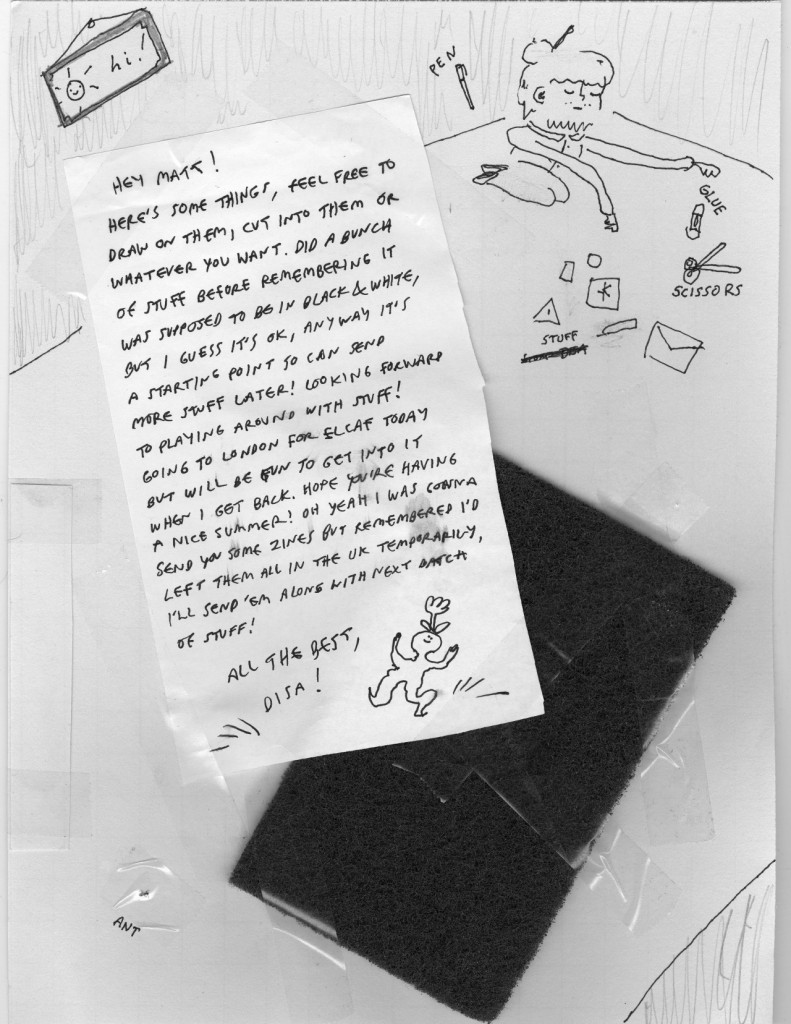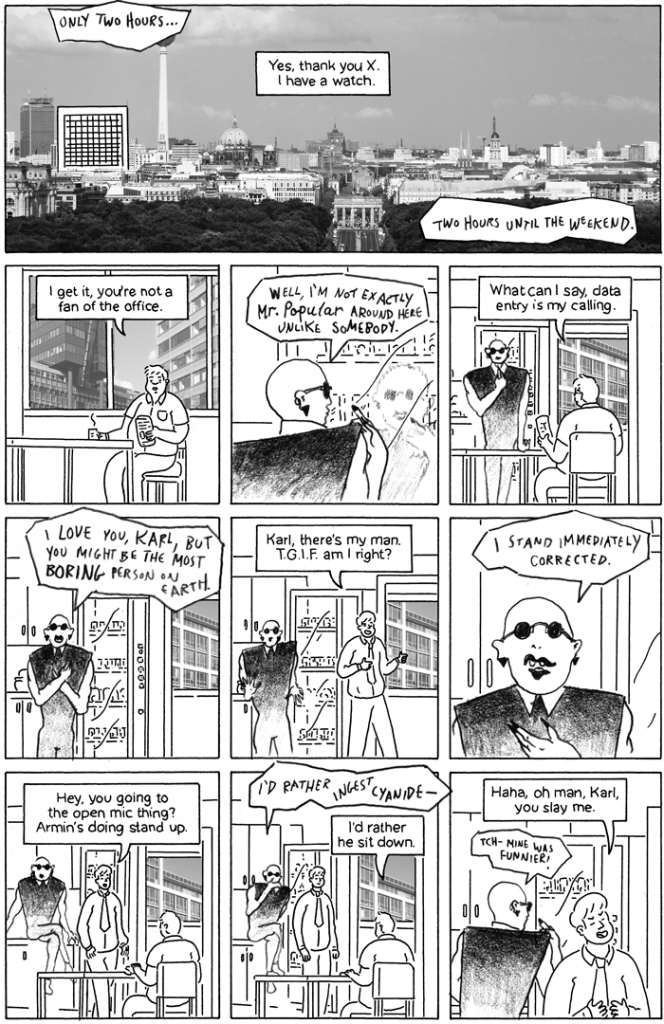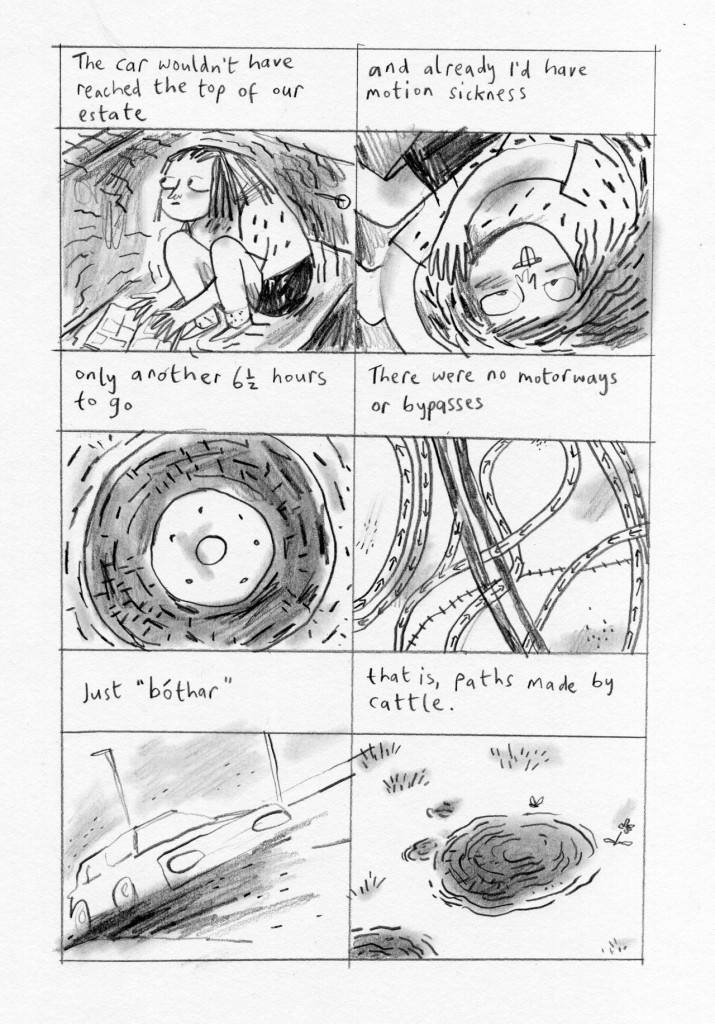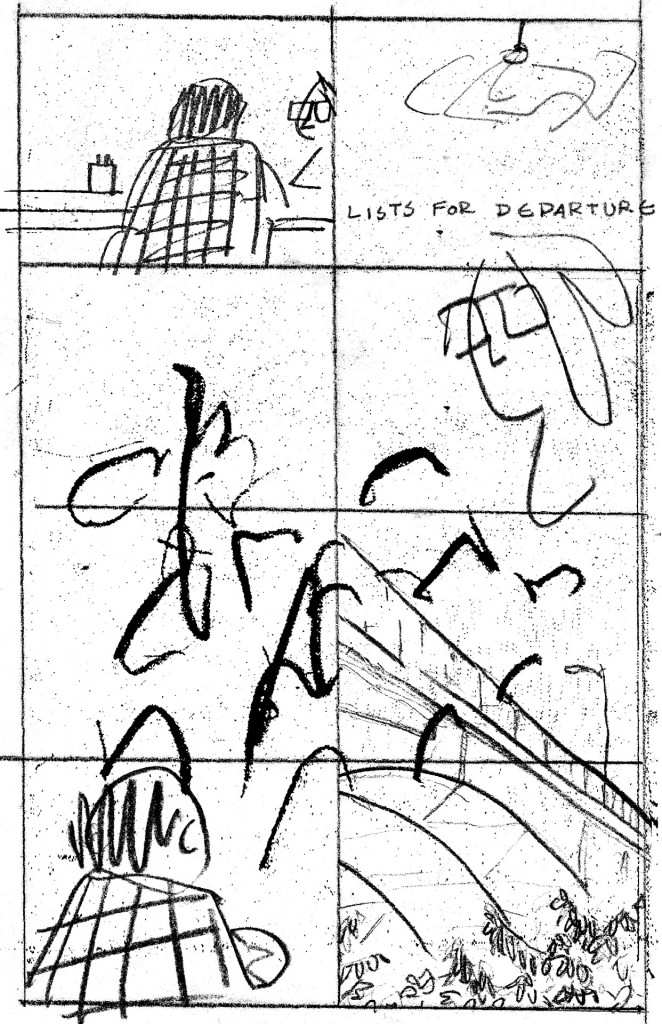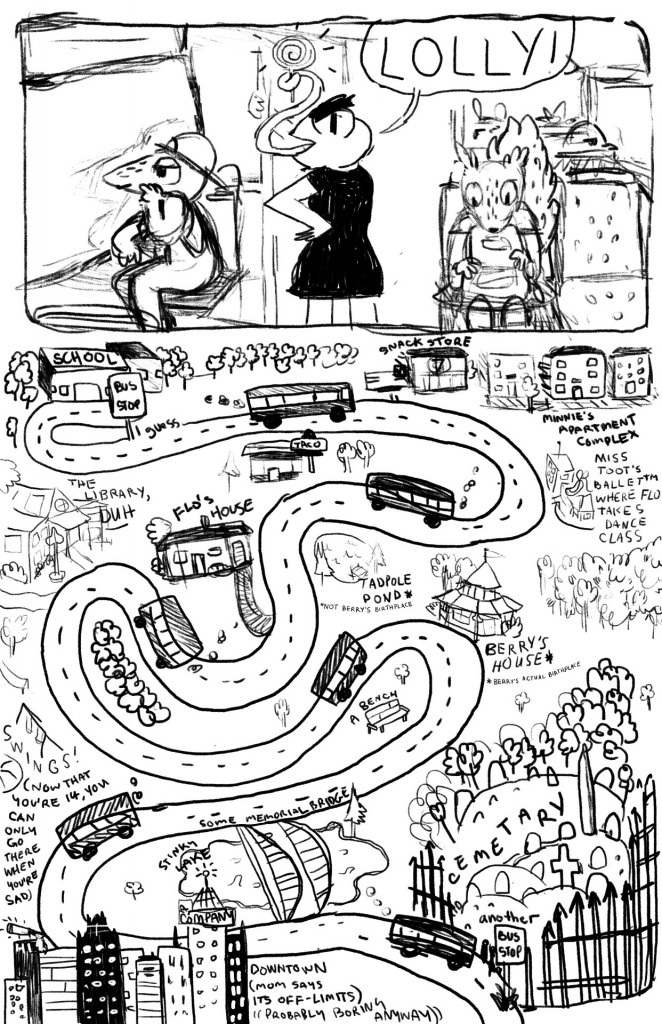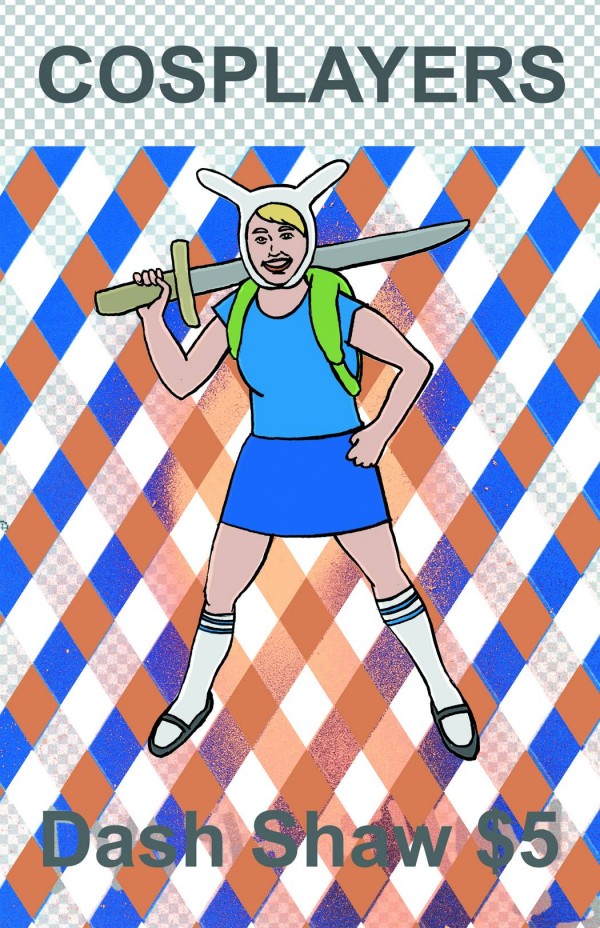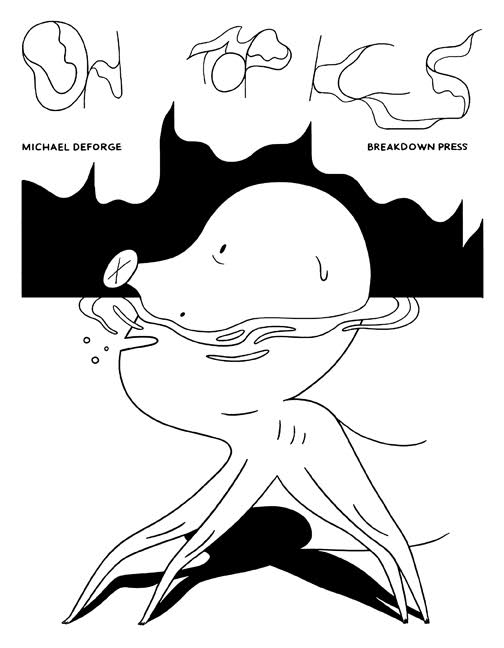“The Social Discipline Reader” by Ian Sundahl

Steadily devoted to publish comics standing out as raw, far from any contemporary pattern and without commercial ambitions, Brooklyn-based Domino Books is one of the most interesting small presses of the US scene. Founded by Austin English, Domino looks just like his patron at a rough and spontaneous line, able to record odd situations and ambiguous feelings on the page, neglecting the cute aesthetics of most of today’s comics. In a world where every style, even if different from the dominant one, tends to become canon to the point of sterilizing itself, Domino’s artists are genuine examples of purity and expressive uniqueness with few equals. I think at the works of E.A. Bethea, of which I have already spoken some time ago in this post, or at Ian Sundahl‘s art, between comics, poetry and literature, marked by a deliberately raw sign, the result of an original aesthetics. Sundahl can really draw and this is obvious especially when he chooses free and intense lines, but sometimes he prefers to rely on sketchy and imperfect forms, in harmony with the material of these comics – dense stories of outsiders, prostitutes and misfits set in darkly lit bars, dusty suburban roads, smoke filled casinos. Sundahl is a Portland-based artist who self-released so far eight issues of his zine Social Discipline. English noticed him and put together The Social Discipline Reader, a 40-page “best of” published in an edition that is the mirror of a direct and no-frills approach.
The book is a jumble of short stories, illustrations, drawn essays. They range from the modern adaptation of the nineteenth-century memoir My Secret Life to Where You Are King – four packed and dark pages in which a prisoner tells a story of sex, jealousy and at the end violence – passing through a series of illustrations of people sitting in front of slot machines, reproductions of pictures taken on the road, two pages about heels (a recurring theme in Sundahl’s art, since he also released an issue of Heelage zine and a new one is on the way). The mood is sometimes very prosaic (“Nothing is so delicious as the intimacy established between a man and a woman by a fuck” begins one of the pieces from My Secret Life), other almost transcendental in depicting men and women as toys in the hands of fate, whether they are subjugated by the impressive shapes of Nevada slot machines or they witness mysterious apparitions of phantom ships.
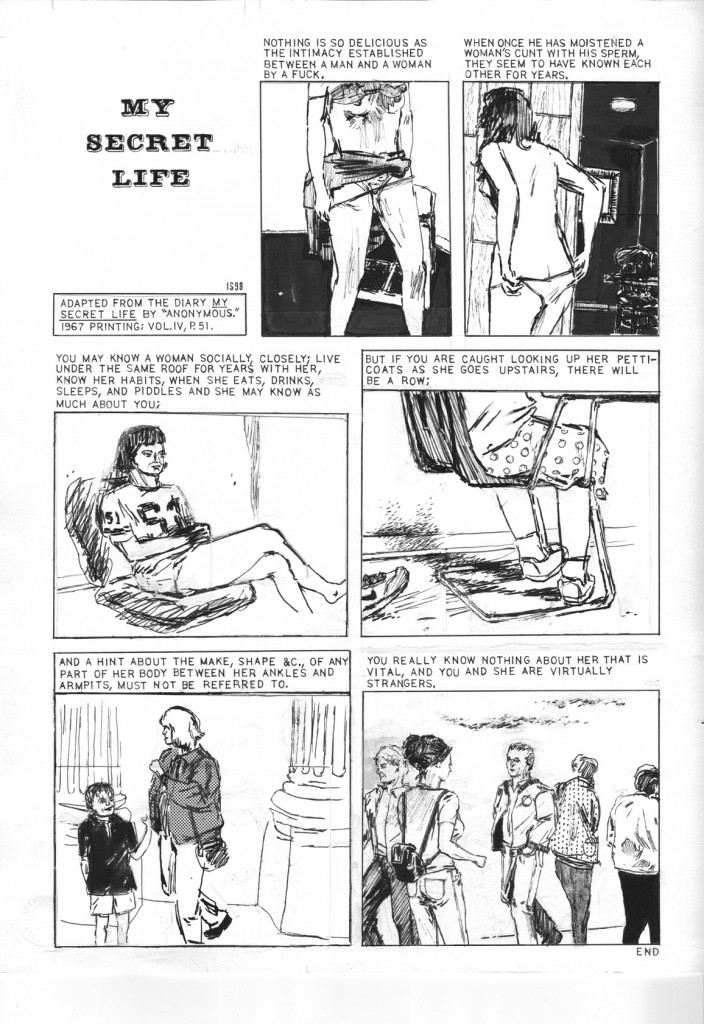 Fascinated by the world as told by Ian Sundahl – pulp and visceral as a certain literature and a few comics can be – I made available some copies of The Social Discipline Reader in Just Indie Comics online shop, where you can also find a section with other fine titles by Domino Books.
Fascinated by the world as told by Ian Sundahl – pulp and visceral as a certain literature and a few comics can be – I made available some copies of The Social Discipline Reader in Just Indie Comics online shop, where you can also find a section with other fine titles by Domino Books.
“Dôme”

Dôme is a 28 x 35,5 cm anthology published by French collective Lagon together with Breakdown Press. Wonderfully printed in risograph and handbound during the latest Angoulême festival in the presence of the majority of the featured artists, it collects in only 40 pages the work of 17 cartoonists among the most intriguing artists of the contemporary comics scene: Lando, Amanda Baeza, Simon Hanselmann, Jeremy Perrodeau, Bettina Henni, Sammy Stein, Dash Shaw, Hugo Ruyant, Antoine Cossé, Michael DeForge, Zoe Taylor, Amandine Meyer, Olivier Schrauwen, Alexis Beauclair, Jean-Philippe Bretin, Joe Kessler, Richard Short.
Olivier Schrauwen’s cover depicts indeed an ultramodern dome in opposition to a vague and mysterious external space. And we could say most of the stories take place inside or outside this dome, since the majority of the comics deal with the idea of “space” and with the dualisms between inside/outside and appearance/reality. Space is sometimes varied, indefinite and enigmatic as in Synesthésie by Hugo Ruyant, sometimes suggestively architectural as in the two pages in positive/negative by Jean-Philippe Bretin. The pond chosen by Lando for the three beautiful opening pages of the book is instead the territory of a game between prehistory and the near future, beautifully illustrated in detail.
In La Lettre Sammy Stein opens windows to boundless horizons in the screen of a smartphone while Antoine Cossé in his one-pager succeeds to tell a story of an extramarital affair representing the inside/outside combination through the huge glass window of a hotel room.
Still far from being monothematic, Dôme also showcases contributions by artists who, despite some concessions to the general feeling, insist on their own poetics: it’s the case of DeForge with the story of two angry and ungrateful children, Dash Shaw with the cosplayer girls already seen in the Fantagraphics series of the same name, Schrauwen breaking the borders of everyday paranoia with 140 panels in two pages, Hanselmann who pulls out of the hat three more irresistible pages of Megg, Mogg, Owl and Werewolf Jones, this time tabling at a Zine Fair.
Joe Kessler and Richard Short deserve a particular mention, as they blend the style of their books for Breakdown, Windowpane and Klaus Magazine, in Paws for Thought, full of dogs, cats, and dynamic shapes: the second and the third pages are particularly great, representing in shades of yellow, red and blue a dog running in the background of a hilly landscape.
Embellished by the idea of reiterating in the central pages an appendix of the different stories as single strips, Dôme is the best anthology of recent years thanks to the exceptional ability of the editors (Alexis Beauclair, Joe Kessler, Sammy Stein) to summarize in a few pages the greatest virtues of contemporary comics. If the eighth Kramers Ergot lacked an overall view, if Mould Map #3 over-indulged in an old-fashioned cyber aesthetics, if Volcan was a bit dispersive, Dôme in just 40 pages gives an example of a really rare aesthetic coherence.
The anthology, printed in 500 copies with a 25 EUR cover price, is currently sold out at Lagon but some copies will be available through Breakdown Press at the upcoming Millionaires’ Club in Leipzig, TCAF in Toronto, ELCAF and Safari Festival in London.
“The Best American Comics 2015”
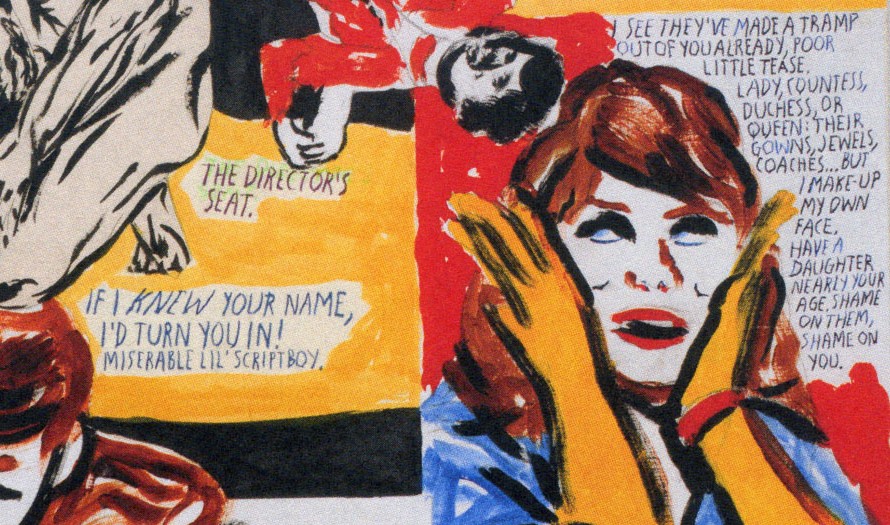
In a market where the graphic novel format prevails, where comics have to be at least 200 pages long because “otherwise I can’t publish it”, a book of nearly 400 pages as the 2015 edition of The Best American Comics is both a confirmation of how the book market has incorporated the comics world and an alien object bringing a breath of fresh air. The series is part of a diverse array of anthologies published by Houghton Mifflin Harcourt which was launched exactly one hundred years ago with The Best American Short Stories. The book about comics debuted in 2006 and has been edited over the years by Anne Elizabeth Moore, Jessica Abel & Matt Madden and now by Bill Kartalopoulos, who took the reins from 2014 edition. The series editor chooses the best comics of American cartoonists released from September 1 to August 31 of the previous year (September 1, 2013 – August 31, 2014 for this edition), and submits a list of them to the guest editor (this year the novelist Jonathan Lethem), who decides what to publish and what to mention in the Notable Comics section.
While under the easy-to-digest format of a voluminous hardcover, good to make it attractive for the bookshop market, The Best American Comics 2015 is actually a celebration of the comics language in its most natural and spontaneous forms. “Comics don’t merely combine text and image – Kartalopoulos states in the foreword – they are, at least, the very distinct product of the interaction between the formal procedures that underlie text and image: a chemical reaction that activates and consumes its constituent elements to produce a third and different thing. So it’s really not right to expect comics to enter too seamlessly into the world of literary book publishing. Comics often are books, but so are Depero Futurista and Max Ernst’s Une semaine de bonté. Comics are positioned to bring together the lessons of both the narrative and the visual arts. As such, comics should continue to have the capacity to appear alien and difficult to assimilate within literary publishing. It is an expression of what they are. To expect comics to function merely as colorful, illustrated cousins of conventional narrative fiction is a profound and wasteful act of self-denial”.
The summary of the anthology is a direct offshoot of this concept. And it’s a pleasure to find under the heading The Best American Comics works coming from the world of micro or self-publishing. So there is Josh Bayer with an excerpt from Retrofit Comics’ Theth, R. Sikoryak with his hilarious covers from Sadistic Comics published by Rotland Press, Julia Gfrörer with the self-published Palm Ash, Andy Burkholder with a short story taken from the magazine Believed Behavior, Mat Brinkman with the first part of Cretin Keep On Creep’n Creek from the Italian anthology Under Dark Weird Fantasy Grounds released by Hollow Press, Alabaster with a few pages from Mimi and the Wolves (first self-published and then reprinted by Hic & Hoc), A. Degen with the short story Crime Chime Noir saw in the first issue of Negative Pleasure’s anthology Felony Comics, Kevin Hooyman with his zines Conditions on the Ground recently collected in a book out from Floating World. And this list could go on and on.
Lethem’s sensitivity definitely helped to select innovative, imaginative, deliberately irregular comics. Comics that aren’t illustrated novels and sometimes aren’t even narrative, looking more to art than to literature. And it isn’t a coincidence that Raymond Pettibon is the author of the cover art and one of the contributors, since he expresses a particular modus operandi of contemporary art, which doesn’t intend to plagiarize the comics language (as Lichtenstein did) but to incorporate and sometimes to rape it. Kartalopoulos refers to the works of this pseudo-trend as paracomics and mentions artists such as Sol Lewitt, Ida Applebroog, Jennifer Bartlett, Keith Haring, Duane Michals, Joe Brainard. I would add the Hairy Who collective, to which Dan Nadel has recently dedicated the anthology The Collected Hairy Who Publications 1966-1969, about which I hope to write something someday.
The anthology includes also some popular and more conventional works, often presented in the form of excerpts. And as with the previous editions of The Best American Comics, it isn’t so great to read only the eight chapter of a graphic novel, but actually I don’t think there are other solutions to include long-form comics.
In addition to the artists already mentioned, the others are Roz Chast, Jules Feiffer, Diane Obomsawin, Ben Duncan, Farel Dalrymple, Anders Nilsen, Megan Kelso, Eleanor Davis, Gabrielle Bell, Henriette Valium, Ron Regé Jr., David Sandlin, Rosaire Appel, Ed Piskor, Peter Bagge, Joe Sacco, Jim Woodring, Cole Closser, Jesse Jacobs, Adam Buttrick, Anya Ulinich, Gina Wynbrandt, Esther Pearl Watson, Matthew Thurber, Noel Freibert, Blaise Larmee, Anya Davidson, Erik Nebel. And after having already experimented writing a comic (Omega The Unknown for Marvel Comics), Lethem is also drawing this time, creating the brilliant illustrated forewords to each chapter. And this adds further value to a highly recommended book.
Best Comics of 2015 – Part Two

Second part of this feature about the best comics I’ve read last year. I selected here comic books and series, now I’m taking a look at long-form comics, hoping that those I have yet to read aren’t better than these listed below. As always, the order is alphabetical. This list doesn’t include Italian comics because I published a separate post here (only in Italian, sorry!).
Black River by Josh Simmons (Fantagraphics Books) – A sort of choral version of Cormac McCarthy’s The Road, Black River is a powerful, deliberately unstructured, inevitably nihilistic graphic novel. Simmons seems very comfortable with post-apocalyptic scenarios and here you’ll find some of his best artworks. Another great work of this cartoonist, who was already in my first list a few days ago with Habit #2.
Colville by Steven Gilbert (Fourth Dimension Books) – A comic book from 1997 without a follow-up, an artist who runs a comic book store in Ontario, a strong, morbid, disturbing story. The Italian cartoonist Ratigher talked about this book better than me in this review (to be translated in English soon). Not simply one of the best comics of 2015 but one of the best comics of the last twenty years.
Drawn and Quarterly: 25 Years of Contemporary Cartooning, Comics, and Graphic Novels (Drawn and Quarterly) – I must confess I haven’t still read it all, but this big hardcover book of 776 pages is unmissable for people like me who built their tastes and their love for comics in the ’90s with the earliest stapled comics from Drawn and Quarterly. Inside there are anecdotes, insights, interviews, vintage photos and many comics by the artists published during these first 25 years, with a lot of remarkable rarities.
Infinite Bowman by Pat Aulisio (Hic & Hoc Publications) – The definitive collection of astronaut David Bowman’s saga takes Kirby’s adaptation of 2001 A Space Odyssey in Fort Thunder’s basements, adding an irreverent pop vein. The book includes 75 never-seen-before pages, depicting the final struggle between Bowman and Satan. Aulisio turns chaos into storytelling with a wild and detailed style.
New Construction by Sam Alden (Uncivilized Books) – A new Sam Alden’s collection from Uncivilized Books, New Construction looks like the perfect twin of the previous It Never Happened Again but it’s much more complex in content. Inside Household and Backyard, two stories already published online and as mini-comics, with the first that is my favorite among the comics made by Alden so far.
Qviet by Andy Burkholder (2D Cloud) – After the magnificent Rudy by Mark Connery, included in my 2014’s list, another book by 2D Cloud has really astonished me. Qviet is the collection of Andy Burkholder’s avant-garde strips, where sex and comics copulate generating multiple orgasms of ideas. One of those comics that can only be comics, if you know what I mean. I published a little preview here.
Sky in Stereo by Mardou (Revival House Press) – One of the best mini-comics in recent years gets the graphic novel treatment with the first of two volumes published by Revival House Press. Sky in Stereo is an autobiographical story full of inventive, with great dialogues and a wise, mature, exciting writing. For me the best comic of the year along with Colville. And the second and final book is already scheduled for this year. I interviewed Mardou here.
Terror Assaulter: O.M.W.O.T. by Benjamin Marra (Fantagraphics Books) – A satire of the American obsession with terrorism after September 11th, O.M.W.O.T. is a strange, original, controversial object, made with a tasty pop art style. Marra isn’t afraid to mix political issues, violence, paradoxical situations and explicit sex.
Ur by Eric Haven (Adhouse Books) – “These are absolutely brilliant and hilarious comics, where Haven blends superheroes parody, the classics from the underground, the strange worlds of Fletcher Hanks, the rhythm of newspaper strips and… explosive diarrhea. But the very leitmotiv of the book is the author’s fascination for absurd, paradox and exaggeration”. Sorry for the self-quote, but I presented Ur in this way as one of the potential best comics of 2015. And the book has solidly maintained its position. If there were more comics like this, this would certainly be a better world (at least for me).
Volcan (self-published) – Ok, there are some derivative contents in here, but this stylish risograph anthology with silkscreen cover, sequel of the previous Lagon, is a beautiful object full of colors, graphics solutions, amazing ideas, bizarre and sometimes disturbing stories. These are avant-garde comics in the tradition of the various The Ganzfeld, Kramers Ergot, Mould Map, with authors such as Fletcher Hanks, Léo Quievreux, Aidan Koch, C.F., Olivier Schrauwen, Yuichi Yokoyama and many others. Texts are in French but there is an English translation booklet.
Best comics of 2015 – Part one
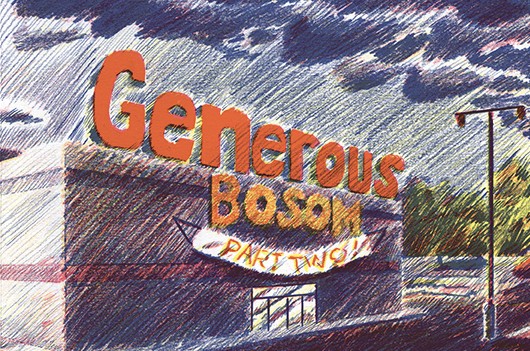
First part of this feature about the best comics I’ve read last year. In this post, I’m talking about the best comic books and series, while in a next post I’ll select the best long-form books. The order is alphabetical. This list doesn’t include Italian comics because I published a specific list here (only in Italian, sorry!).
Blammo #8 1/2 by Noah Van Sciver (Kilgore Books) – Quintessence of the most multifaceted and sometimes odd Vansciverism, the eight-and-a-half issue of Blammo anthology is the perfect compendium to books like Saint Cole and Youth Is Wasted. Van Sciver has also published Fante Bukowski and the autobiographical mini My Hot Date this year, producing two more chapters of his high-quality bibliography.
Crickets #4 by Sammy Harkham (self-published) – I still haven’t received the recently published fifth issue of Crickets, and I’m very curious to find out if Sammy Harkham managed to keep the high standards of this fourth output, that sees him at the top of his production and also of contemporary comics. The new chapter of Blood of the Virgin is dense, packed with great dialogues and beautifully illustrated.
Generous Bosom #2 by Conor Stechschulte (Breakdown Press) – Conor Stechschulte is one of the greatest authors of comics nowadays but few are aware of it. The news is well known to the British guys of Breakdown Press, who recently released the second chapter of his Generous Bosom. I will try to talk about Stechschulte’s comics in more detail as soon as possible.
Habit #2 by Josh Simmons and others (Oily Comics) – Josh Simmons rounds up an interesting team composed of Tom Van Deusen, Eric Reynolds, and Ben Horak to tell a series of repulsive but also amusing and paradoxical situations. A sort of essay about the topic of “good taste”, with the initial The Incident at Owl’s Head representing the top of the collection.
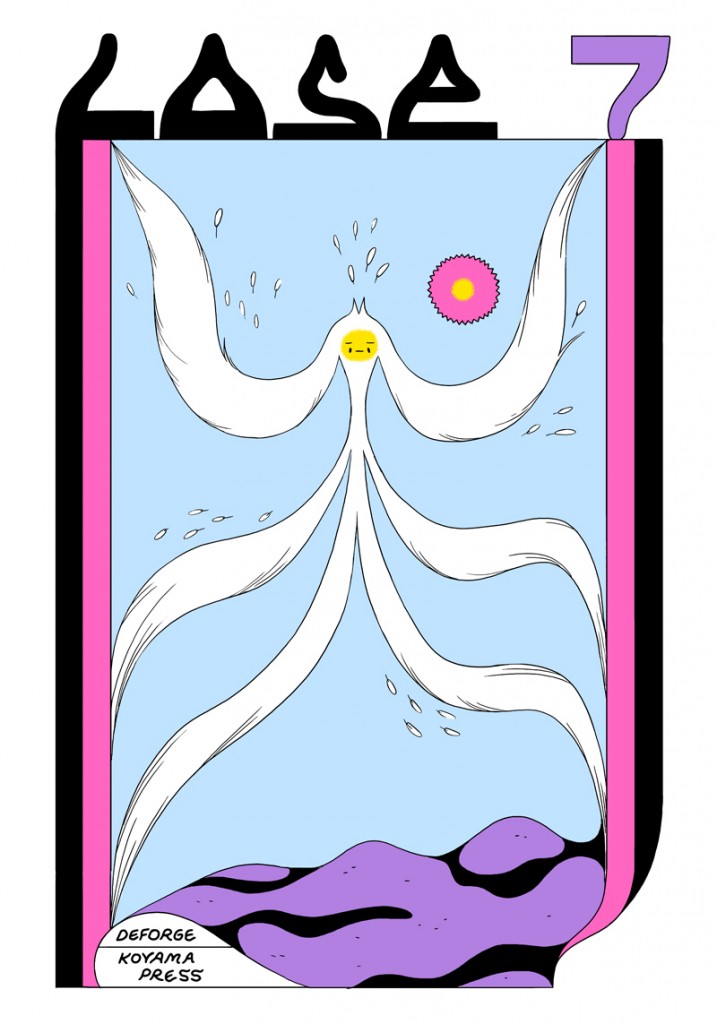 Lose #7 by Michael DeForge (Koyama Press) – Lose #6 was in my list of the best comics of 2014, so it’s easy to say DeForge reserves his best work to this series, this time with a story of a father, a daughter, and a rediscovered twin. And now you should keep an eye on Big Kids, out in February from Drawn and Quarterly.
Lose #7 by Michael DeForge (Koyama Press) – Lose #6 was in my list of the best comics of 2014, so it’s easy to say DeForge reserves his best work to this series, this time with a story of a father, a daughter, and a rediscovered twin. And now you should keep an eye on Big Kids, out in February from Drawn and Quarterly.
Missy #3 by Daryl Seitchik (self-published) – The catastrophic and visionary ending of the previous Middle School Missy (see this post about the comics from SPX 2014) finds a powerful development in this new Daryl Seitchik’s diary comic. The stories are becoming blurred to make room for an almost abstract approach, in which the theme of loneliness is investigated in a few lines and words. Beautiful as only seemingly simple comics can be.
A Mysterious Process by GG (self-published) – I’ve already defined it as one of the best comics of the year, since it was serialized on Comics Workbook’s Tumblr between 2014 and 2015, and then it was printed some months after. The cartoonist known only as GG has a strange effect on me, because I think there is something incredibly fascinating in her stories but also something annoying. However, I’ve no doubts about A Mysterious Process, a dark, enigmatic, metaphorical, powerful and evocative story in cinemascope, with subtitles reporting dialogues. You can read it here.
š! #23 by Various Artists (kuš! komikši) – Sometimes change is good and this is definitely confirmed by the 23th issue of this Latvian anthology, that leaves temporarily the usual short-story format to offer only five comics, all focused on the victims of Nazism and all by European artists. In addition, a postscript by Ole Frahm explaining genesis and development of the project, which included historical research and workshops with the artists. A particular praise goes to Paula Bulling and Vuk Palibrk, authors of the two best episodes of the collection.
Windowpane #3 by Joe Kessler (Breakdown Press) – I saw the original artworks from Windowpane #3 at BilBOlbul, where Breakdown Press had an exhibition and Richard Short and the same Joe Kessler were guests. The artworks showed the different phases that led to this beautiful risograph print. The story is the first part of a longer narrative and is pleasantly uncomfortable in the style of Conor Stechschulte’s comics.
Worst Behavior by Simon Hanselmann (Pigeon Press) – As always without much fanfare, Alvin Buenaventura’s Pigeon Press published this little paperback containing the longest story so far of Megg, Mogg, and Owl. These 52 pages in black and blue follow the usual dynamics of Hanselmann’s comics but the crescendo of assorted oddities is absolutely irresistible.
“Toxic Psycho Killer”. An introduction
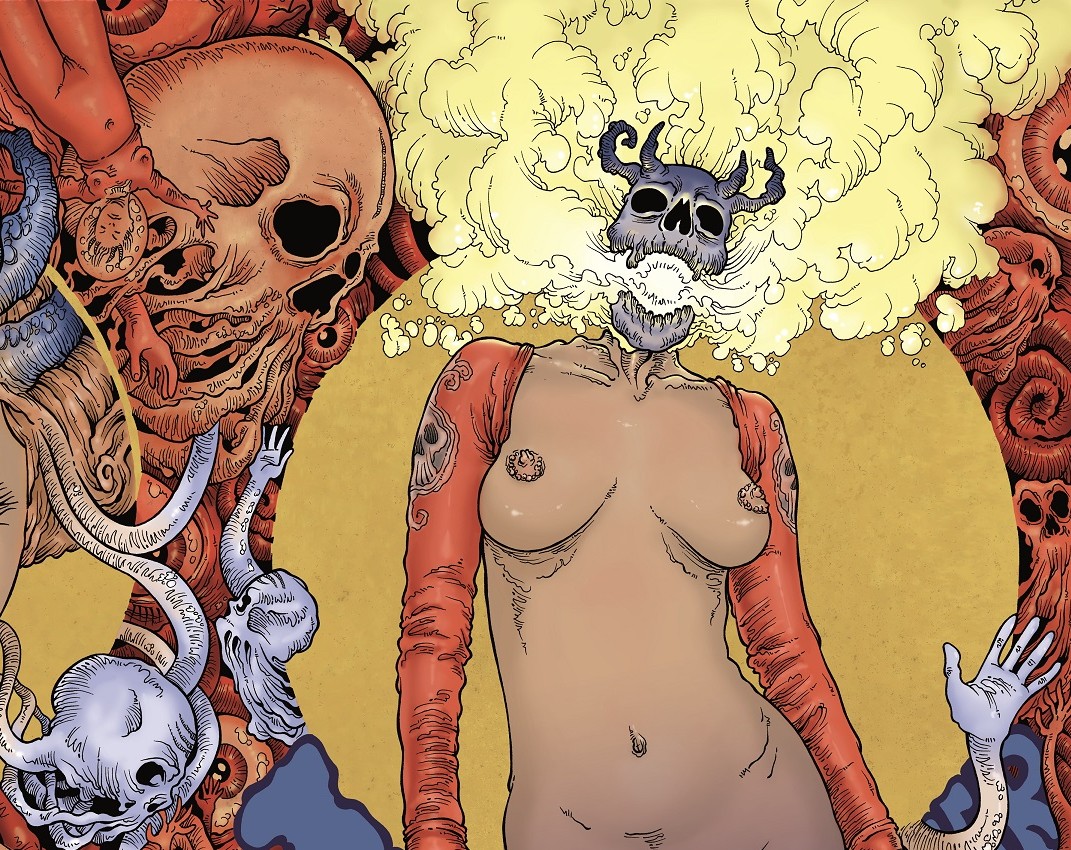
I wrote this foreword for the book Toxic Psycho Killer by Italian artist Paolo Massagli, published by Hollow Press. This is the complete text, with the cover, some pages from the book and a biography.
Darkness is the Place
There are cartoonists who continually look for new challenges. Individuals who wind up juggling a thousand different projects, flipping between comics and illustration to eke out a living. And then there are others who with focused determination and passion to a specific aesthetic ideal stride along a singular path, because they don’t need to please the audience or contend with the vagaries of the publishing industry. Paolo Massagli belongs to this latter category. And this is not to accuse him of rigidity but rather to state that the author of this comic has dedication. Whether he’s reinventing the fabulous world of Oz (in a series of which the fans are still waiting for the fourth issue), or bringing his audience to the hell of his Under Dark Weird Fantasy Grounds stories, or launching the reader into a space where no man has gone before, every page is unmistakably a page by Paolo Massagli.
Some suggest Paolo’s brand is that of “Milo Manara drawing an American comic book from the ‘90s”. And while the comparison may be crude, the two Italian artists certainly have one thing in common: a devotion to the female form. Indeed, when I found out Paolo was commissioned to draw a solo book for Hollow Press and that the title would be Toxic Psycho Killer, I was certain of one fact: there will be a lot of naked women. I also imagined a kind of American Psycho, a blend of dark moods and horrific situations with a crazy and mutant serial killer slaying women in the alleys of some undefined American metropolis. But when pressed about the subject matter, he explained it was about a “divine being landing on an undefined alien world to annihilate the whole population”. Well, at least I was right about the “undefined” setting.
The action of Toxic Psycho Killer focuses on a single protagonist, a woman wandering in space to exterminate everything she considers a virus. At first she looks like a victim, then like a heroine, but actually she recalls Silver Surfer, the herald of Galactus traveling by way of surfboard through numerous galaxies to find a suitable world that will quell the Majestic Lord’s insatiable appetite. Anyway, the immediate difference with the Surfer is evident, not only because she does the dirty work on her own. In fact the rigid Comics Code Authority-governed qualities of the Surfer have little to do with the provocative and sensual protagonist of the comic you have in your hands. Paolo hovers around her, depicting her with precise, unsparing detail. For instance, in a gorgeous close-up he devotes himself to examining the contours of her mouth, wrinkle by wrinkle, as well as the appearance of her eyes, lash by lash. Maybe you’ll notice crisper, less intoxicated compositions than usual, where white space prevails over black and the line is clear, defined, tidy, as if we were in a French sci-fi serial from Métal Hurlant. But someone already familiar with Paolo’s comics shouldn’t be afraid. Even from within a deep space milieu, there are still spectacularly gruesome tentacles emerging from garishly-rendered mouths, myriad depictions of skulls and even a dark globe, helping to consign darkness to its own proper place. A place that is the center of Paolo Massagli’s art, where he crafts his own deviant visions. A place that is more than enough for him.
Paolo Massagli is an Italian cartoonist and illustrator. He began his career as a draftsman in the early ’90s, making comics and illustrations for different magazines and fanzines. His bibliography counts a collection of fairytale horror stories called Le Minifiabe, the web-comic Alice nel Paese degli Orrori where he created a lysergic version of the famous novel by Lewis Carroll, and O.Z., a very personal reinterpretation of The Wizard of Oz released as self-published mini-comics from 2010. Now he is working on Hell, a story serialized in the Under Dark Weird Fantasy Grounds anthology published by Hollow Press. He has many fans in the USA, where his original artworks and commissions are mostly sold.
Talking about CAKE with Jeff Zwirek
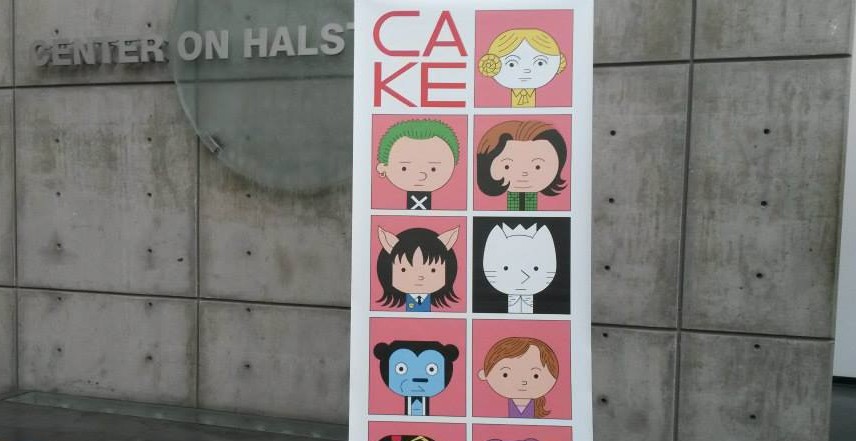
I already talked about CAKE, one of the most important underground and indie comics convention in the North America. Even if I wasn’t there, last year’s event looked like a big show, as you can see from this photo gallery I published some months ago. In these days, the new edition of Chicago Alternative Comics Expo is already in the works and so I talked with one of the organizers, the cartoonist Jeff Zwirek (author of Burning Building Comix), about CAKE and more.
Ok, let’s start from the most important thing. When next CAKE will take place and when the deadline for application is?
CAKE 2016 is June 11th and 12th. It’s our fifth year and we’re happy to once again be back at the wonderful the Center on Halstead. Applications are open now up until November 30th.
I know the show was founded only in 2012, but now it’s already one of the most important underground and indie comics conventions in North America, maybe thanks to the big comics community of Chicago, where there is also Quimby’s, a store that is a sort of institution for underground and self-published comics… I’d like to know how the idea of CAKE was born and if you had some specific goals for this show.
It’s funny you mention Quimby’s cause it’s there where CAKE was really born. Neil Brideau and Edie Fake were both employees of Quimby’s at the time and started a conversation about Chicago needing a comics convention to highlight all the talent that’s pooled in the city. They recruited some friends that felt the same way like me, Max Morris and Grace Tran. We didn’t really know what we’re doing, but had experience as comics makers and exhibitors at other shows. It was also at Quimby’s that we had our meetings after the store would close. The goal was to make a show for Chicago and the Midwest that highlighted the talent that we have. We’ve always admired other conventions like SPX, that have promoted the alternative comics community and have tried to model ourselves on those types of shows while being true to our Midwestern roots. Most importantly though, the purpose of the show is to promote our exhibitors. They make up the community and it’s that community that makes the show the success that it is.
Speaking of which, when you’re selecting people who are submitting an application, you have a preference for artists and publishers in the Chicago area or the show is equally open to everyone?
The show is wide open to anyone. We encourage a wide a range of applicants as possible so long as they make alternative comics. We do love our Chicago residents and try to get their names promoted as much as possible, but we always have a large portion of our exhibitors from out of town and we always have a show floor stacked with incredible talent. All the CAKE artists are also on the same level, so sometimes you’ll find a first-time exhibitor sitting next to a 30-year vet.
You’re also organizing other events in Chicago and I think this is an important thing to keep the attention about CAKE alive. I’m thinking for example at the event with Keiler Roberts and Edie Fake at the Chicago Architecture Biennial. Do you have other meetings in the works?
CAKE has turned into a series of events throughout the year. We host several fundraisers including drink and draws and our very popular art auction. It’s a chance for the community to get together more and socialize. CAKE has been expanding into other areas like the Architecture Biennial, and we look forward to more partnerships with the city.
How is the comics scene in Chicago? Which spots you would recommend to a visitor? And do you think there are some comics that describe your city or are strictly connected to it?
The comics scene in Chicago is very exciting. With a crew of veteran cartoonists and young fresh faces showing up all the time, there is a wide range of styles and personalities. Chicago has a ton of great comic shops and several are must go to destinations. Quimby’s is legendary as is its sister store Chicago Comics. There’s also the Comix Revolution, Challengers, First Aid Comics, Third Coast, and like a dozen Graham Crackers stores. Edie Fake’s comics are an excellent example. I also think Chris Ware, early Daniel Clowes and Jessica Abel, and Ivan Brunetti are tied to the city in a special way. John Porcellino’s King Cat speaks more to Illinois and the Midwest in general, but his comics and his dedication to the medium have always been very important to CAKE. And of course there is Trubble Club, the Chicago collective who’s crazy comics are made jointly by Chicago cartoonists who meet and draw together regularly.
I saw a first list of guests for next year’s event, including Sammy Harkham, Patrick Kyle, Tyrell Cannon, Ezra Clayton Daniels, Cathy G Johnson, Laura Park. Do you want to disclose some other names?
We’re not ready yet to talk about other names just yet. We’re diligently working on more people to bring to the show with some super exciting names in the mix. We’ll be announcing more names as they get confirmed, so make sure to follow our social media posts to get the latest news.
There will be some changes in next year’s show?
The show evolves and changes a little every year. Last year we saw a big jump in attendance and our exhibitors reported high sales. We also introduced our workshops programs which were a huge hit. We’ll continue to refine those aspects and bring new ideas to the show, but a lot of the good things will be the same. We’ll be in the same amazing space at the Center on Halstead. We’ll still have our show in June, when the weather in Chicago is beautiful, and we’ll continue to keep our table costs low for our exhibitors, and the show free to attend. I’m sure we’ll have new exciting exhibitors, and we’ll have a slate of programming with our special guests that continues to enrich the comics culture here in the city.
And what about you? Are you working on a new comic to debut at CAKE?
One of the ironies of organizing a comics festival is that it gives me less time for my own comics. So debuting a comic for the show has never really worked out. I pluck away at comics as much as I can and go to other great conventions like SPX, Autoptic, TCAF, and SPACE.
“The Meeting” by Andrea Chronopoulos
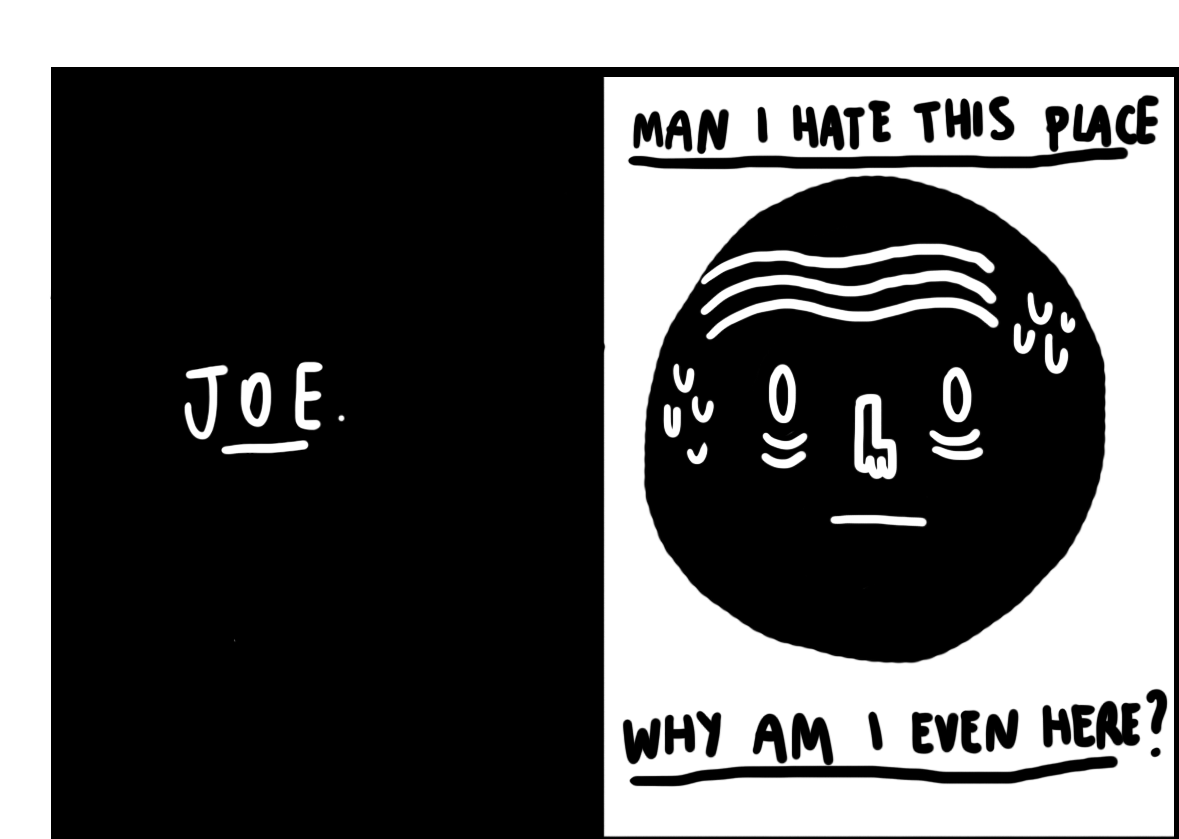
When I read The Meeting in its very limited comic book edition published by Studio Pilar, I was stunned, because this is a comic that shows all the features of the perfect short story, with a well-structured plot, a visionary interlude, and a sharp ending. Furthermore, the minimal drawing style is perfect to tell a story that is ironic but also suffused with a Seventies feeling, made of conspiracy theories, obsessions and paranoia. And then there is Richard Nixon in it, could you ask for more?
Andrea Chronopoulos is a freelance illustrator born in 1990 in Athens. He moved to Rome to study illustration and animation and became a founding member of Studio Pilar, a collective of illustrators, a self-publishing label and now also a bookshop. He recently collaborated to the anthology Cocktails After-Dinner. Enjoy the reading.
First look at “Dog City” #4
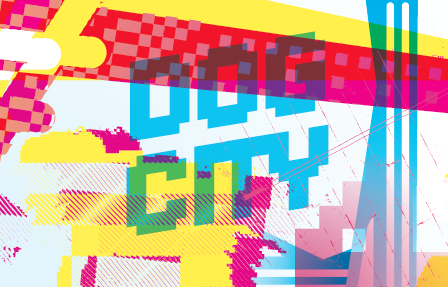
This isn’t exactly a preview, since the book has already debuted some days ago at the Small Press Expo, but here you can find some images from the brand new issue of Dog City, edited as usual by Simon Reinhardt, Luke Healy and Juan Fernández. If the third issue, as the ones before, was made of a screen-printed cardboard box including mini-comics, prints and posters, the fourth anthology in the series is a standard paperback, available here in the USA but distributed also in Europe for the first time thanks to the print-on-demand service CreateSpace by Amazon. Inside you’ll find seven comics made by 14 different cartoonists. Every comic is a collaboration between two artists and in particular between Disa Wallander & Matt Davis, Luke Healy & Sasha Steinberg, Sarah Bowie & Iris Yan, Ed Cheverton & Dan Rinylo, Simon Reinhardt & Whit Taylor, Aaron Cockle & Juan Fernández, Caitlin Rose Boyle & Jennifer Lisa. Below a page from every comic in the book.
Just Indie Comics online shop is born

After a long time in the making, I finally managed to inaugurate an online shop, where you’ll find more or less the comics I’m usually talking about on the website. I’m saying more or less because there won’t be a direct link between the comics on the blog and the ones available in the shop. Just Indie Comics won’t lose its informational and critical contents, even if I didn’t write so much “critic” so far, since I’m mostly trying to spotlight the comics I like. Moreover, one of the goals of this initiative is to enhance the website. I hope to have a lot more reviews around here, thanks to the close connections I’m creating with cartoonists, publishers and distros.
At the moment you can find in the shop a lot of comics from USA and Canada. I think this was pretty obvious, since I’m talking mostly about the North-American scene and for that I’ve called the website “Just Indie Comics”. So the shop is addressed to European readers, who can order from me comics not to be found in other European websites or shops at the moment, sparing very expensive shipping rates and maybe also some customs costs.
At the moment I’ve in the shop some issues of the Frontier anthology published by Youth In Decline (the ones by Anna Deflorian and Emily Carroll, while issue 7 by Jillian Tamaki is sold out), two comics by Antoine Cossé (Harold and Showtime #1), On Topics by Michael De Forge published by Breakdown Press, the two issues of Cosplayers by Dash Shaw published by Fantagraphics Books, Night Animals by Belgian artist Brecth Evens, Drawn Onward by Matt Madden and Wicked Chicken Queen by Sam Alden published by Retrofit Comics, the second and the third issue of the series Ritual by Malachi Ward published by Revival House Press, the Killoffer’s issue of Mon Lapin, and some bigger books at special prices, like Lapsos by Inés Estrada, Distance Mover by Patrick Kyle, Co-Mix by Art Spiegelman, The Wild Kingdom by Kevin Huizenga, Bumperhead by Gilbert Hernandez, Everything Together by Sammy Harkham. All the comics are new and come directly from the publishers or from some American distros, like John Porcellino’s Spit and A Half. Take a look at the website for a full list, while if you want to hear about the new arrivals you can like the Facebook page of the shop. In the next weeks, I’ll have new comics from Hic & Hoc Publications, One Percent Press, Hollow Press and a lot of other titles, including the fourth issue of the Mould Map anthology published by Landfill Editions. Stay tuned!



